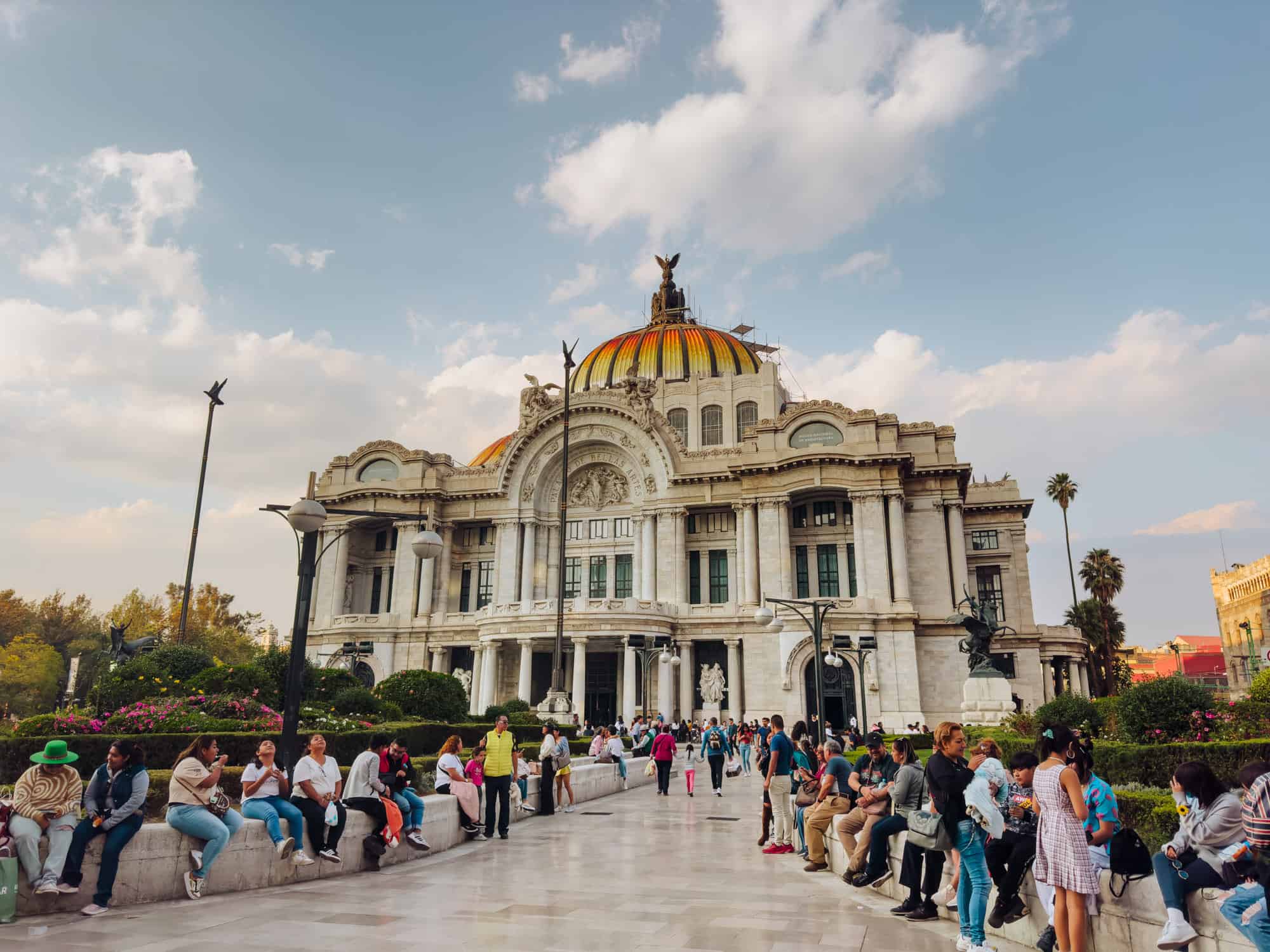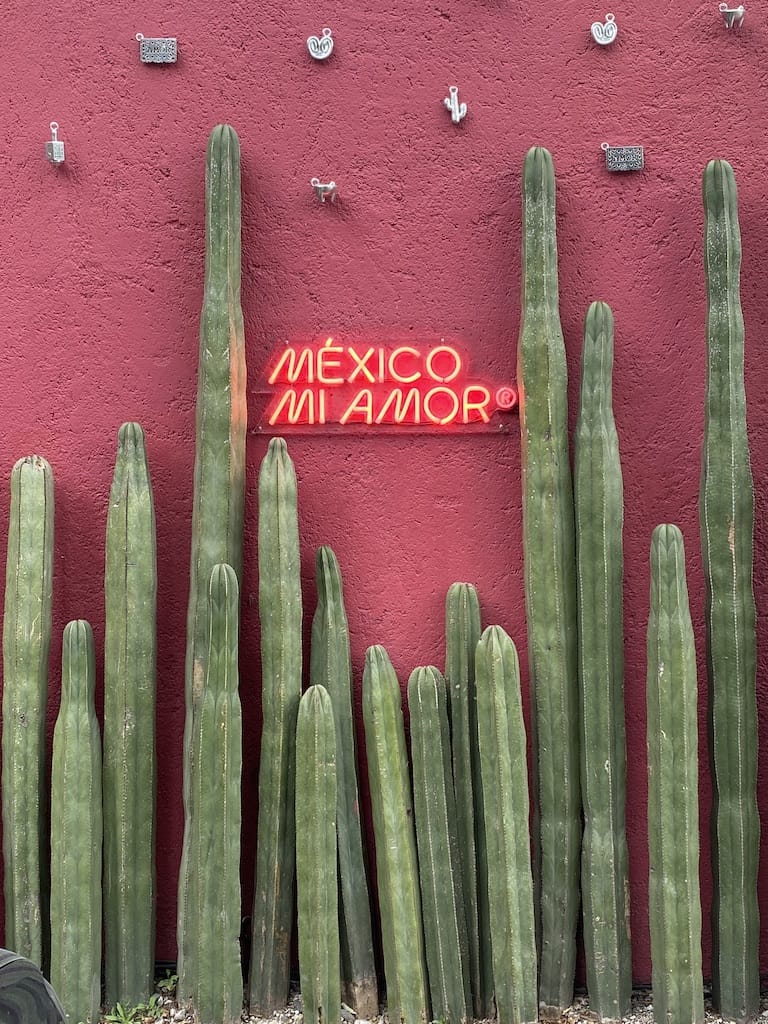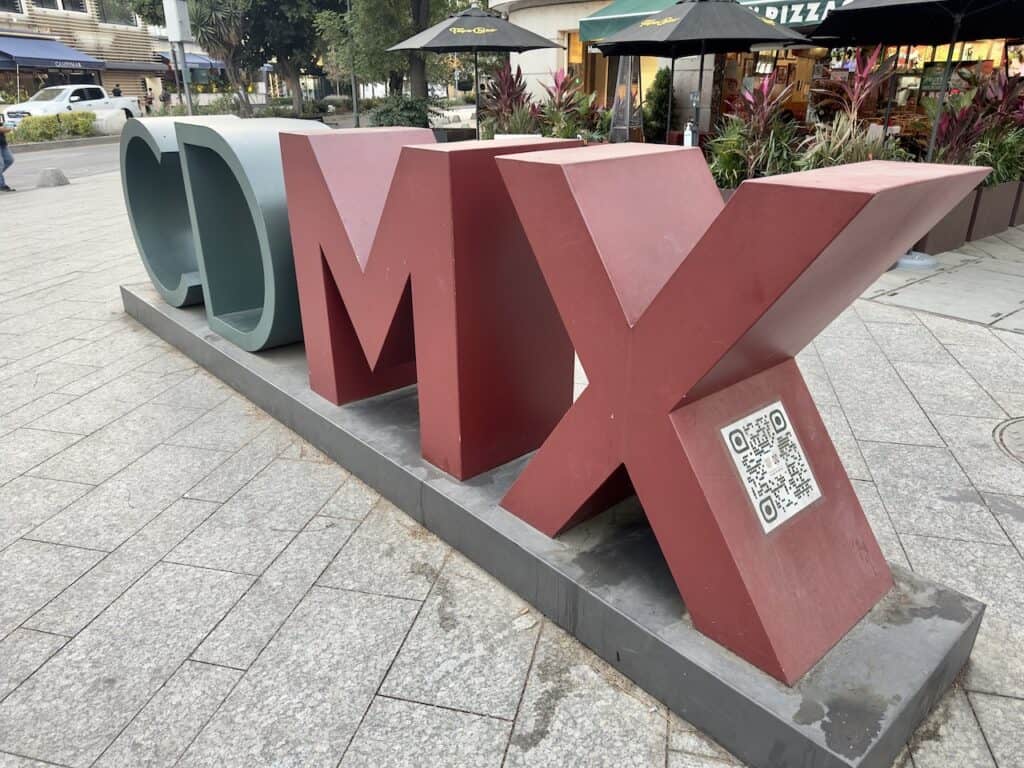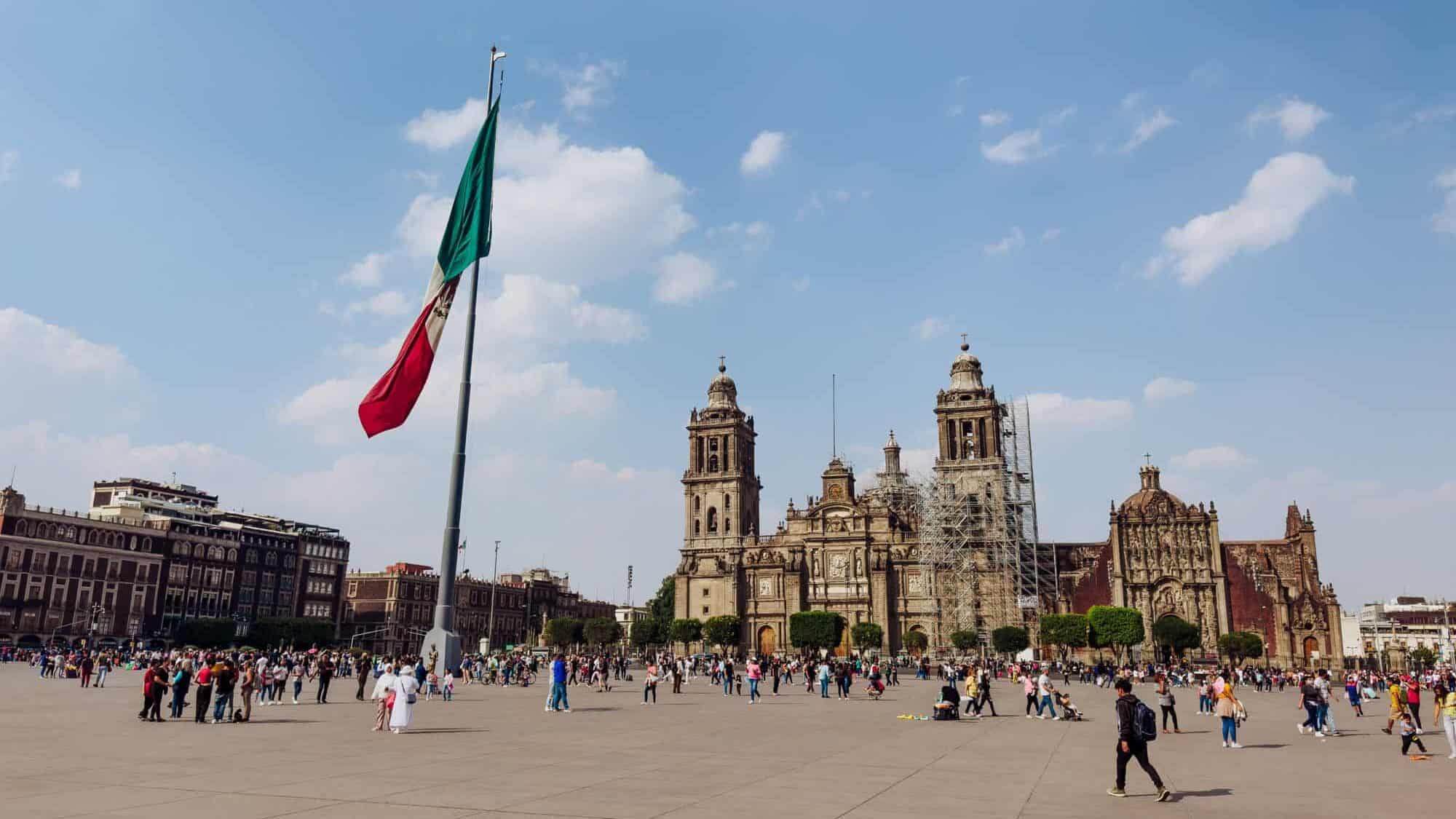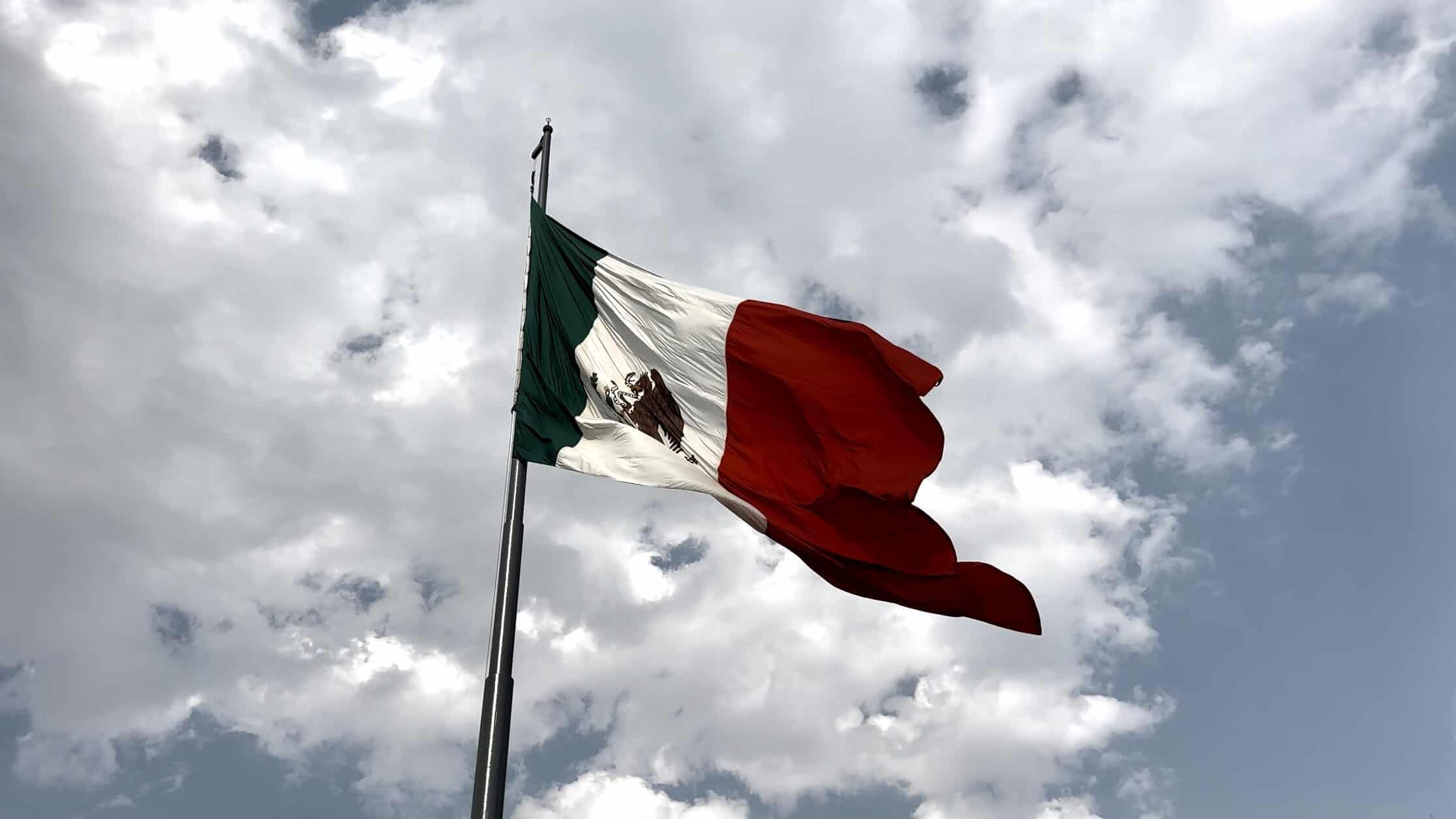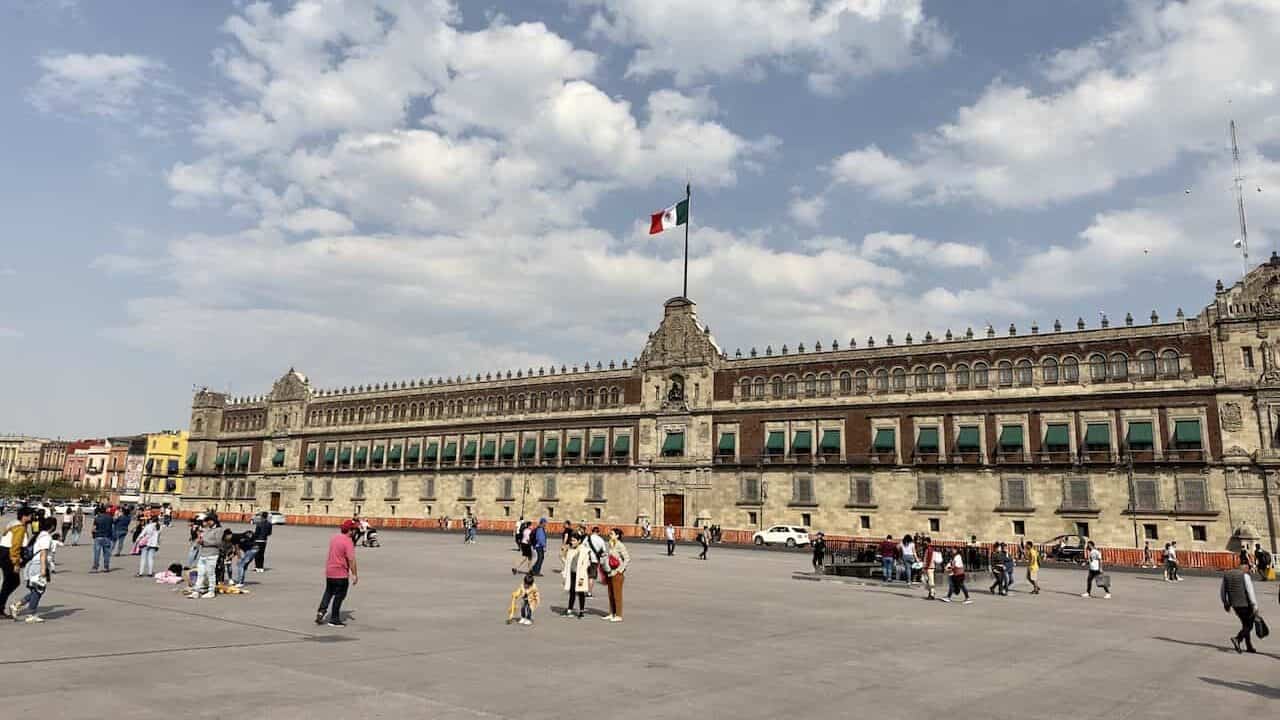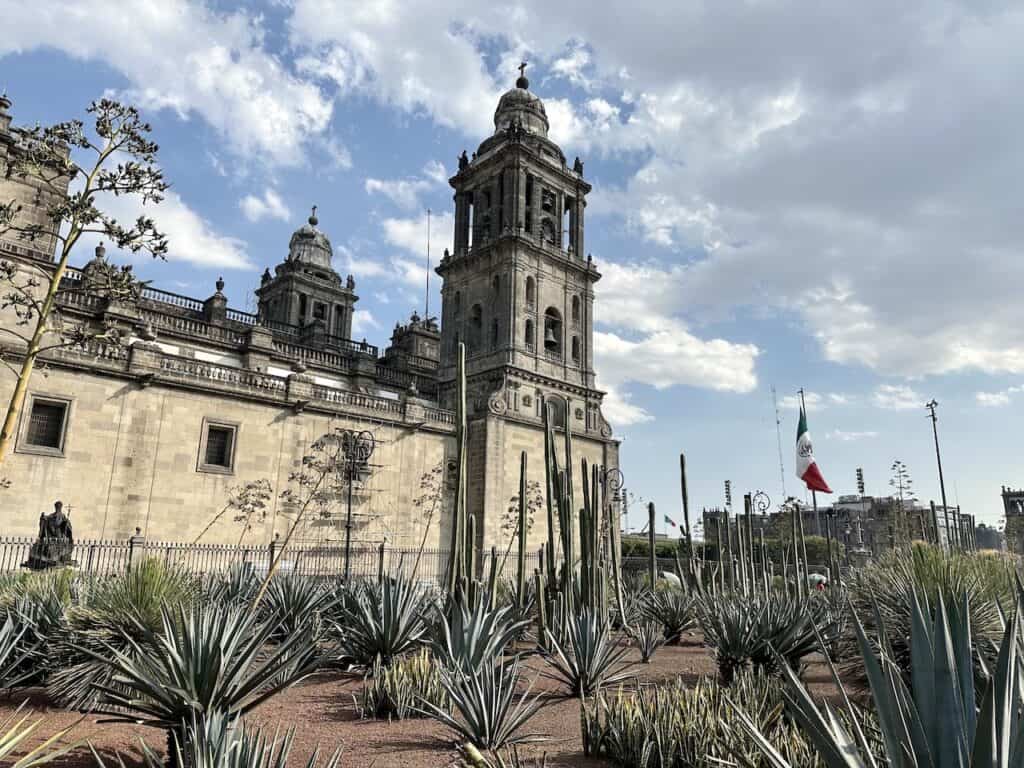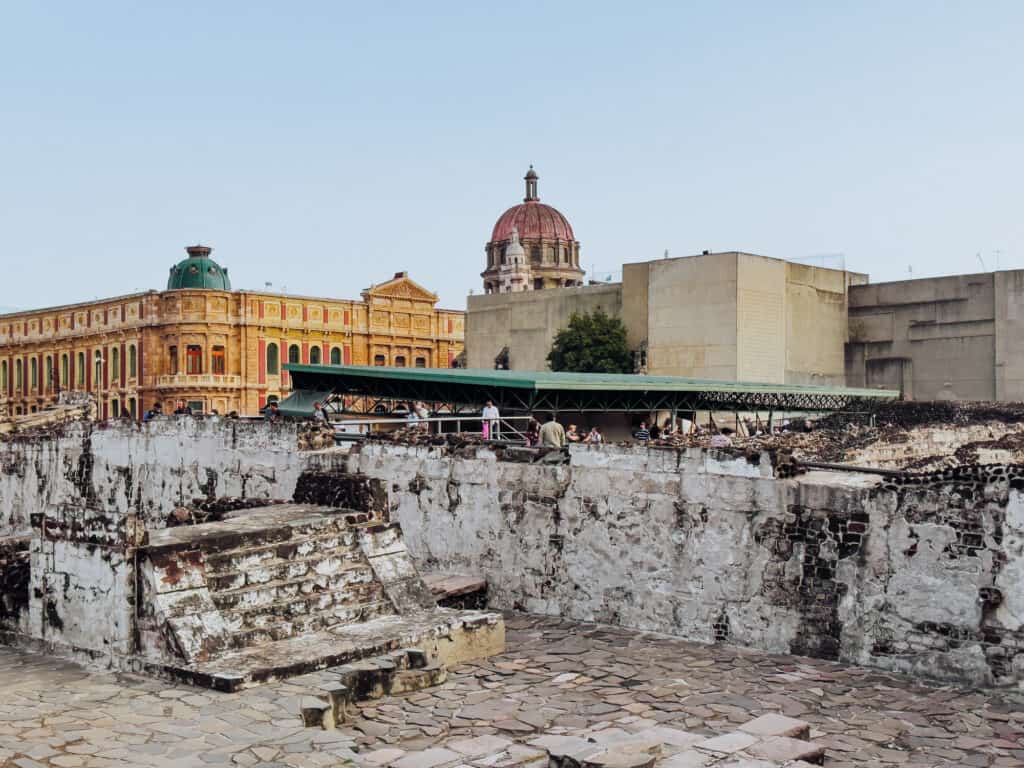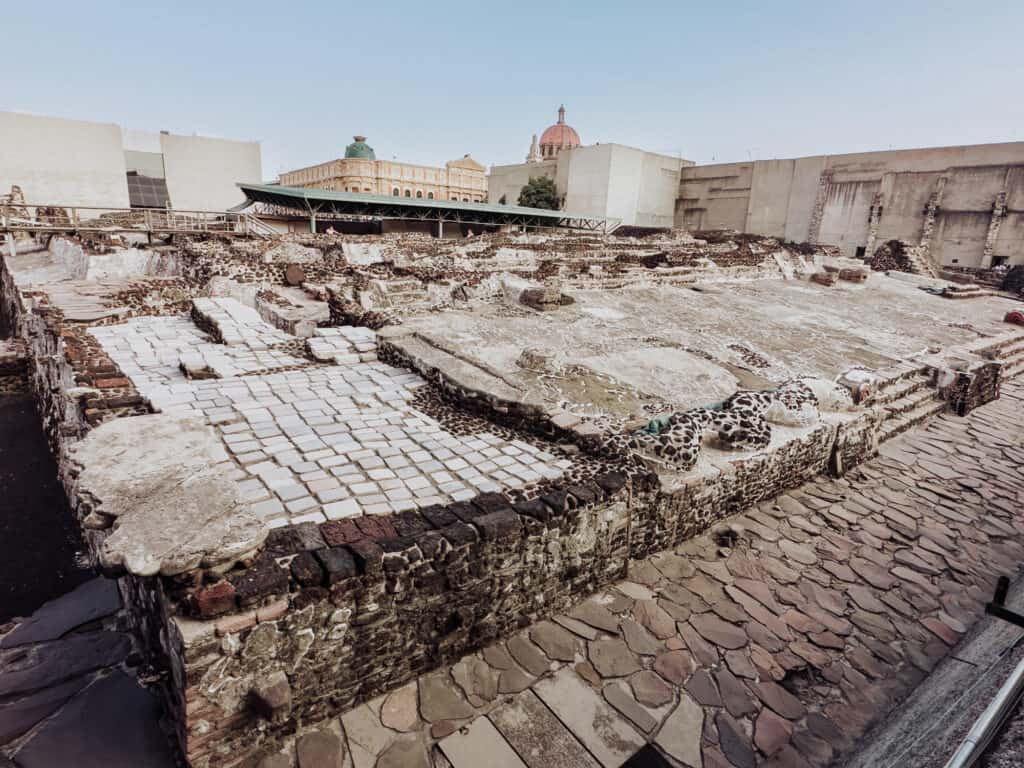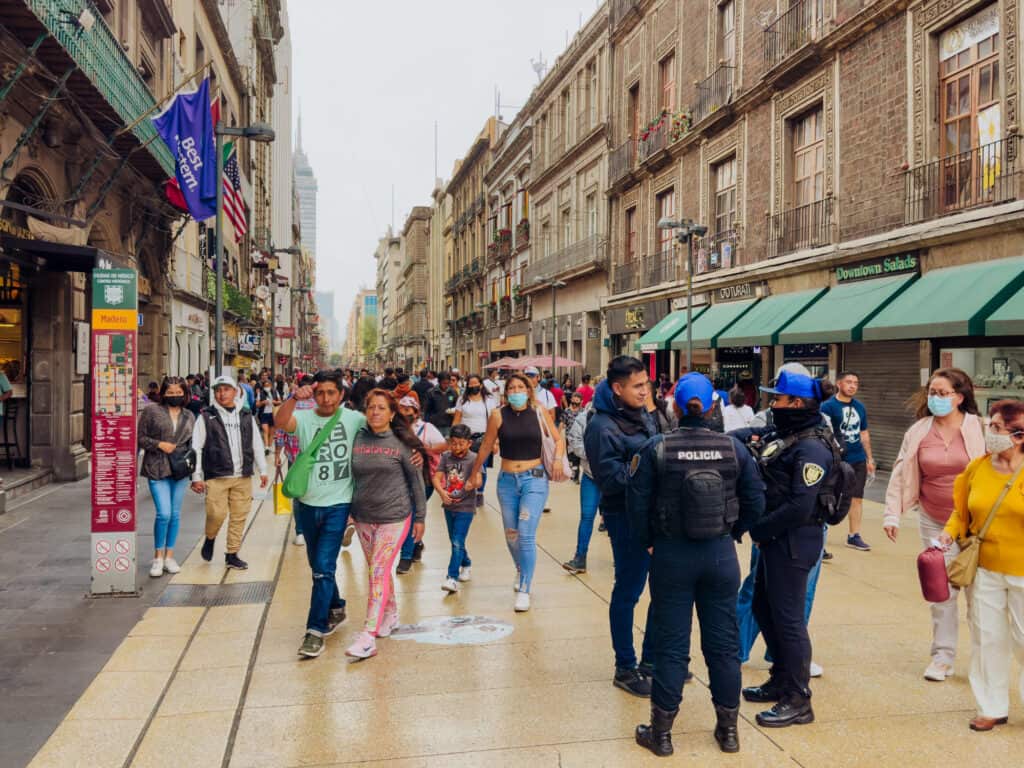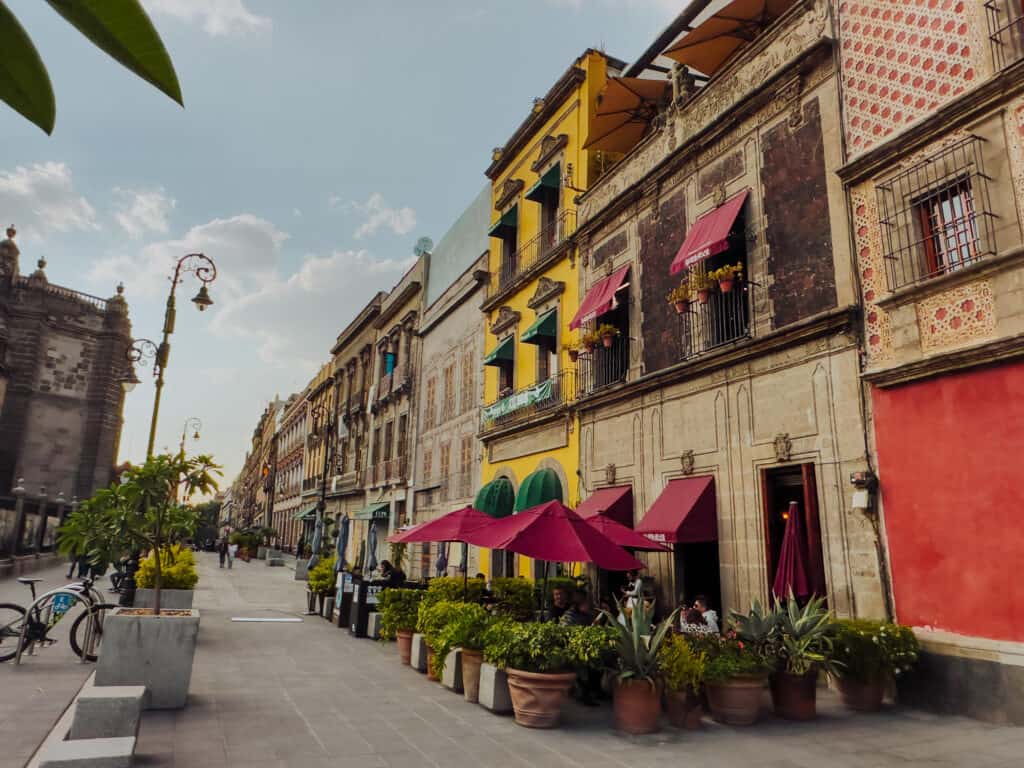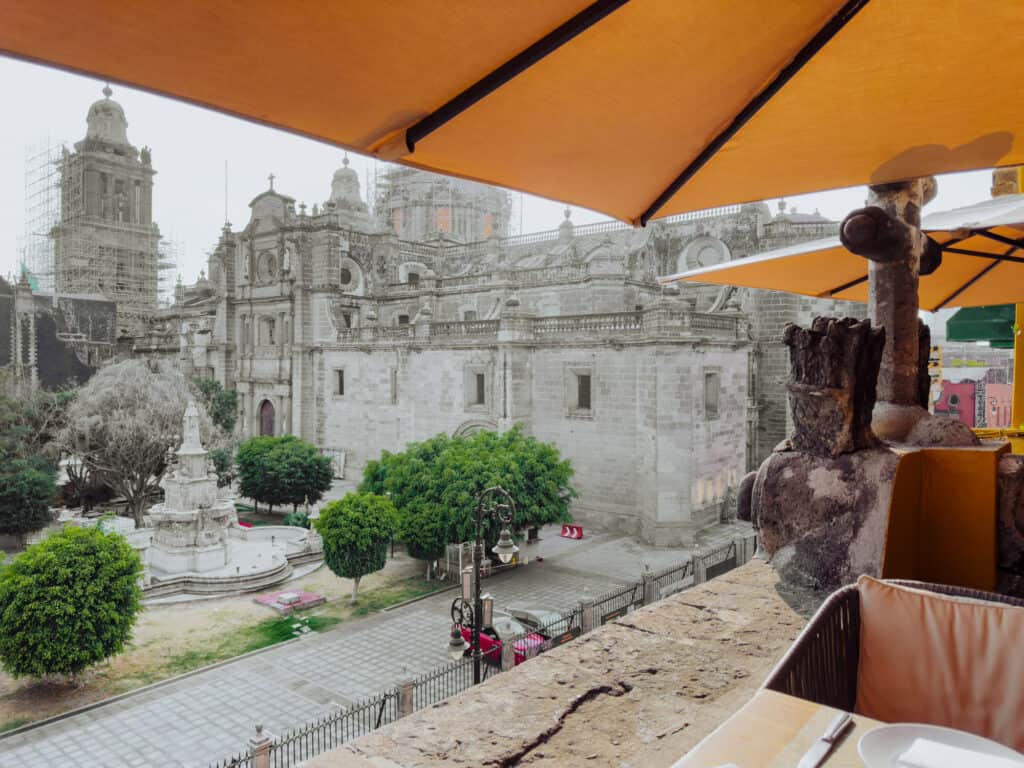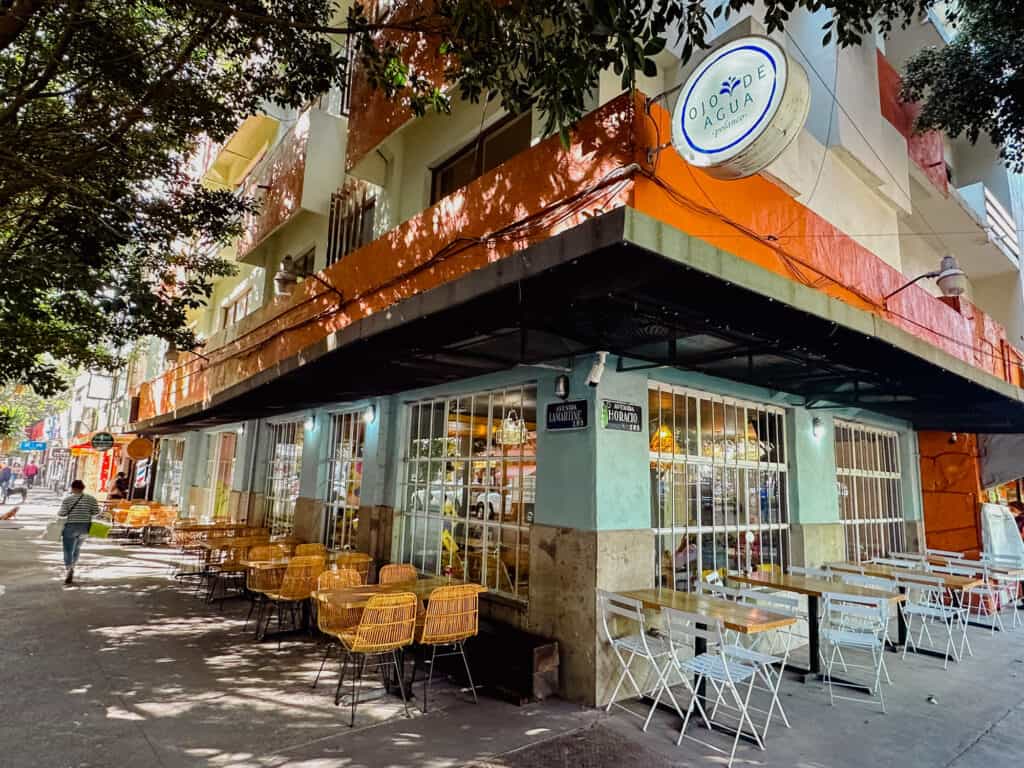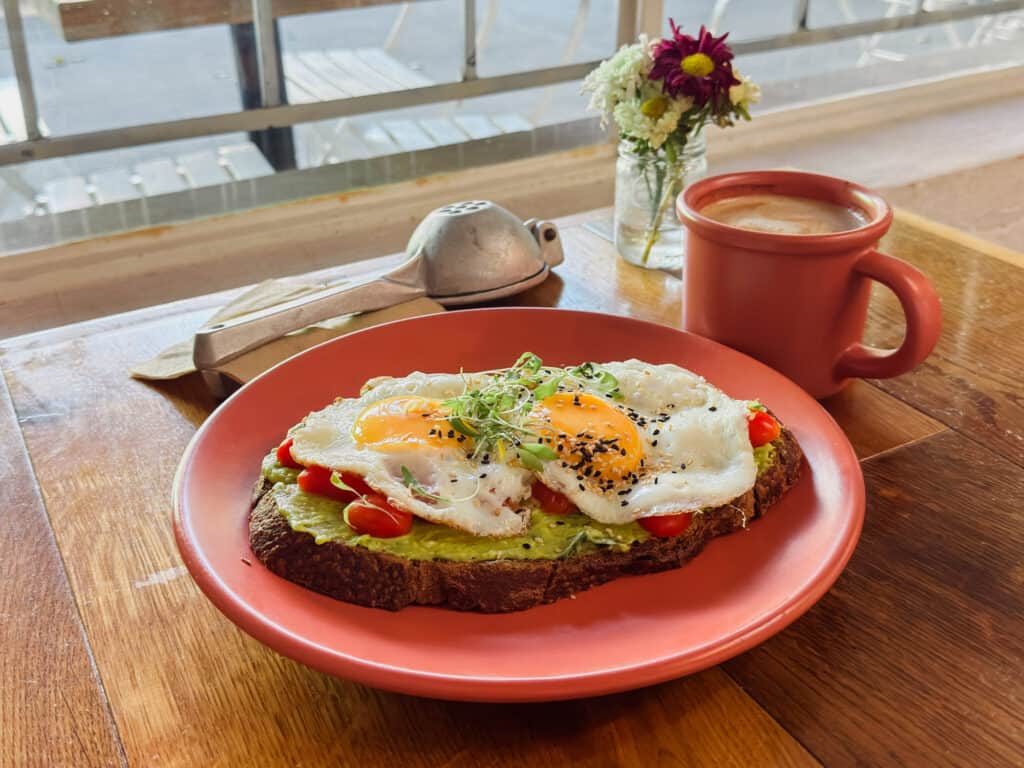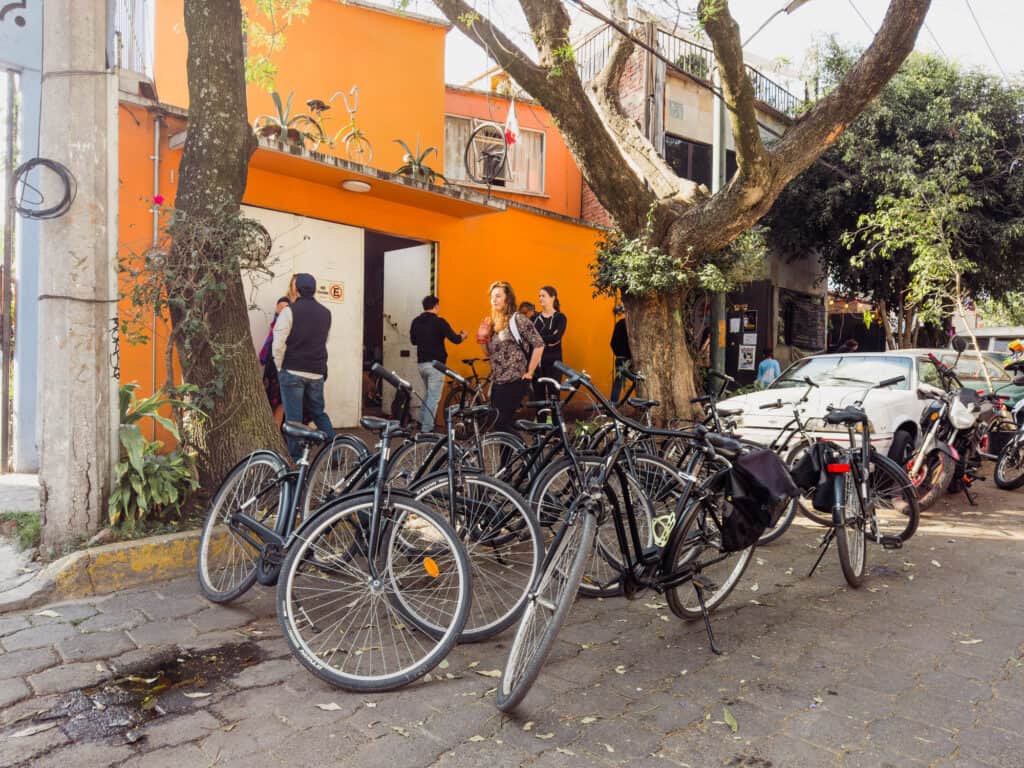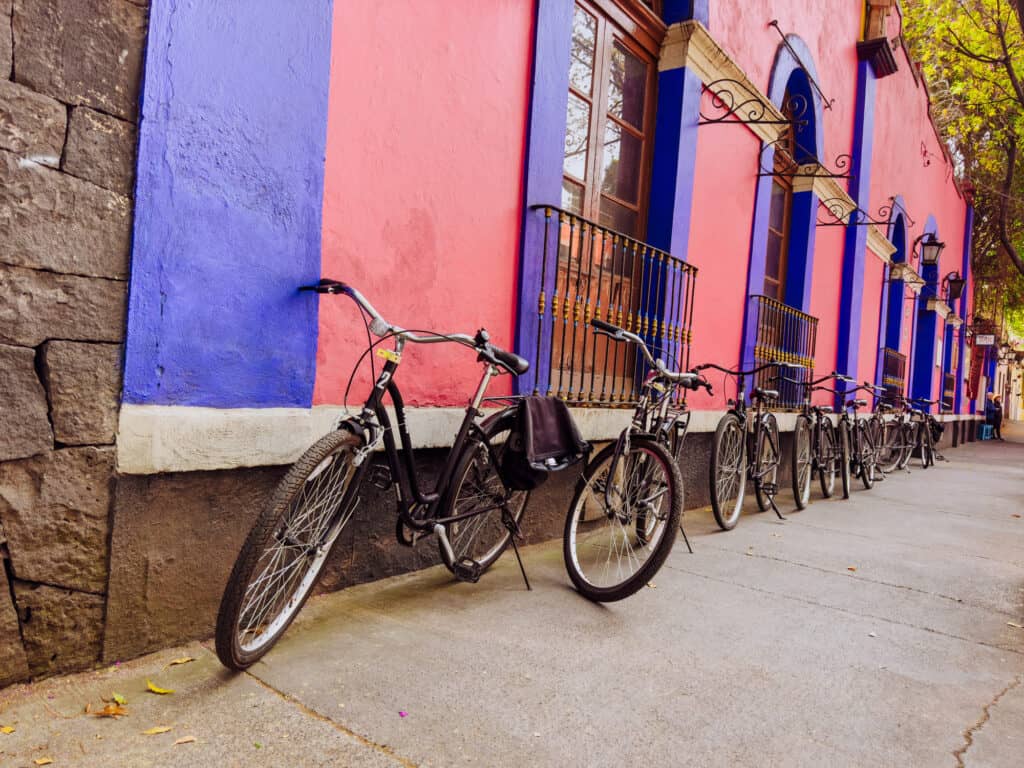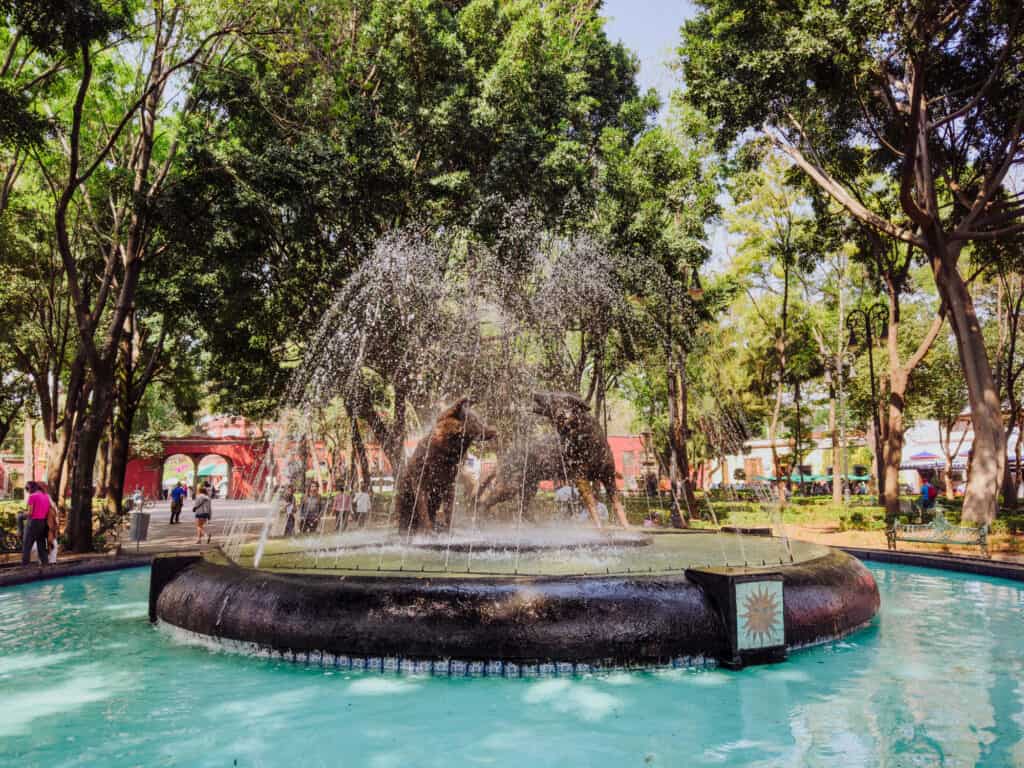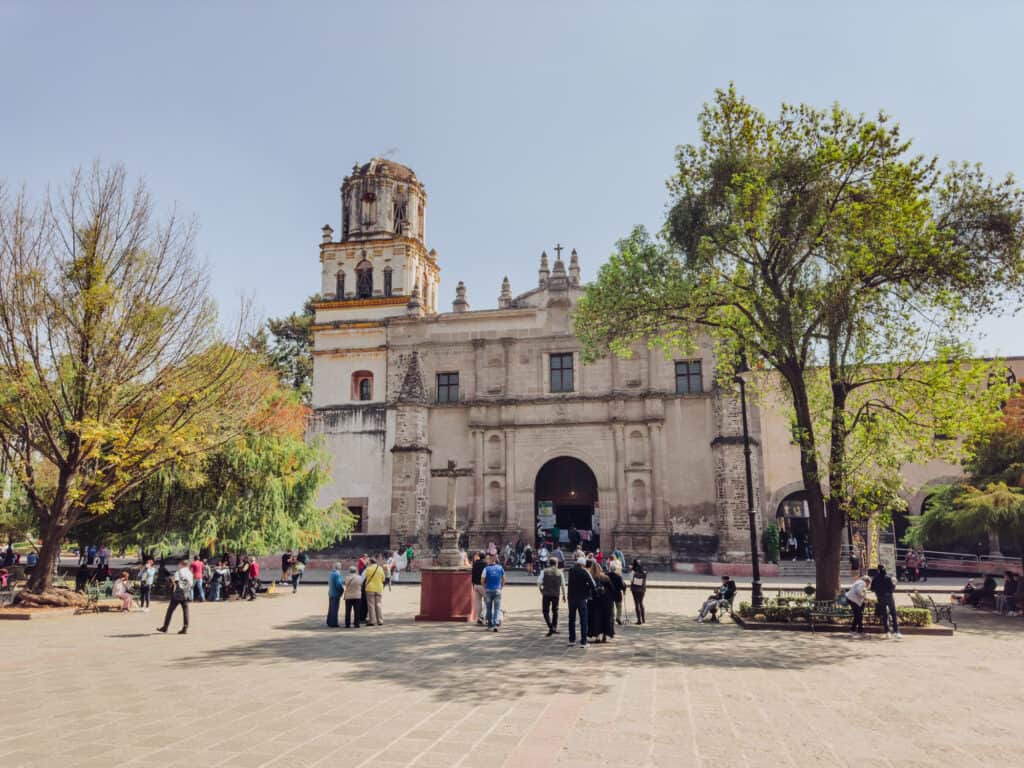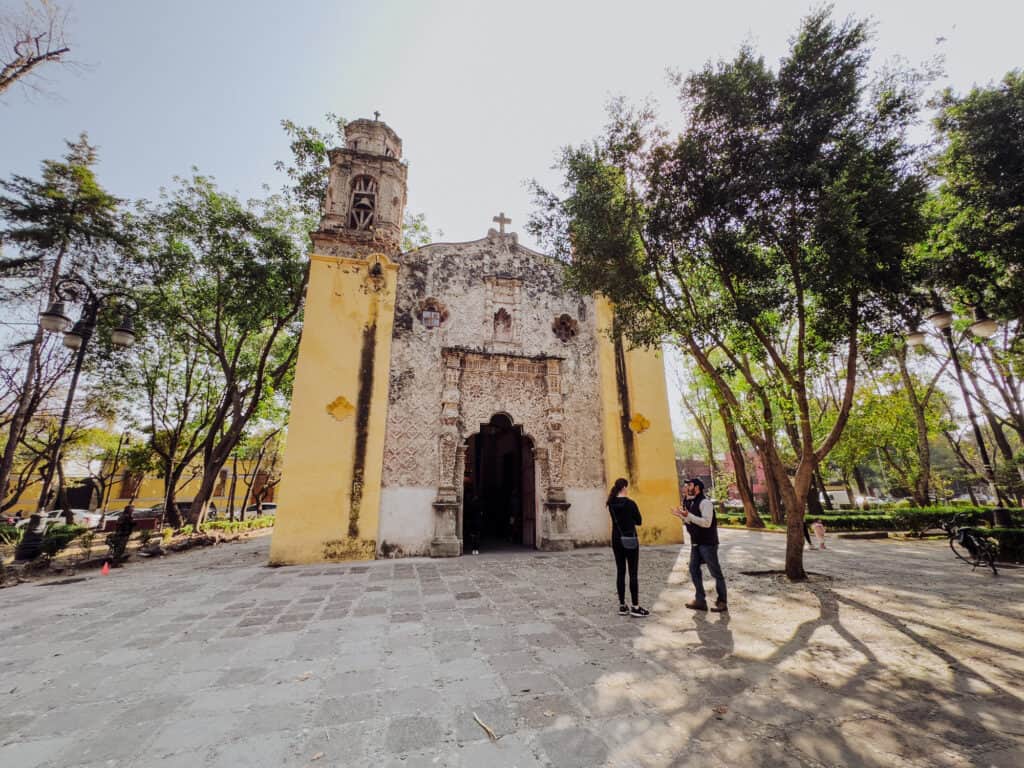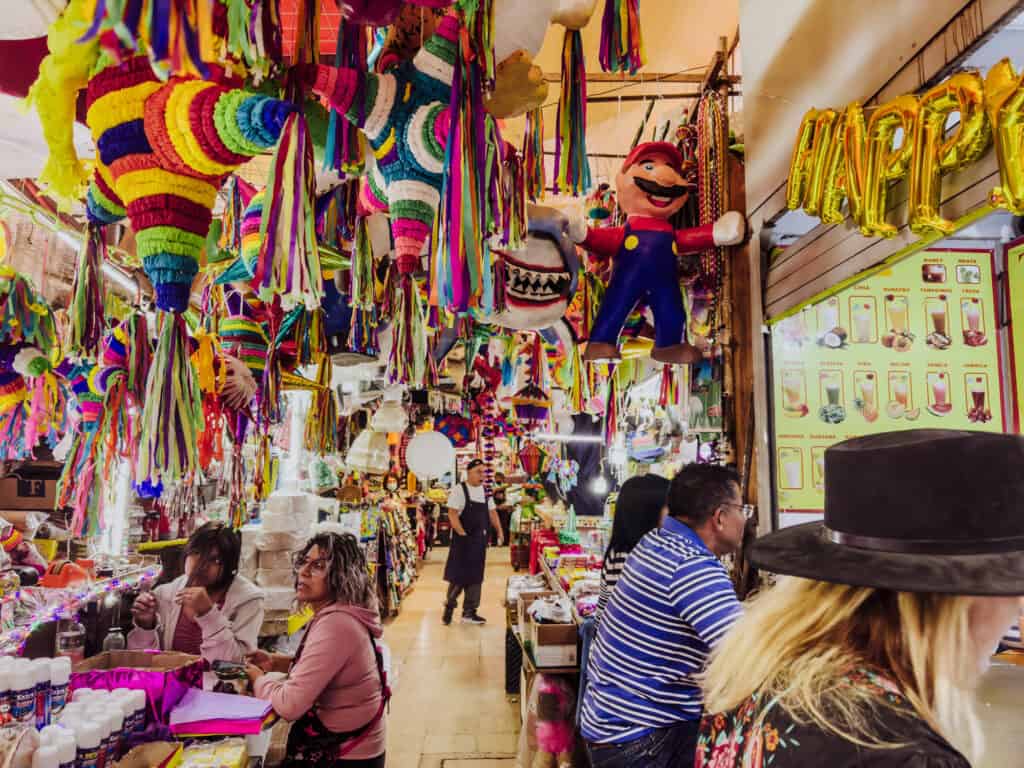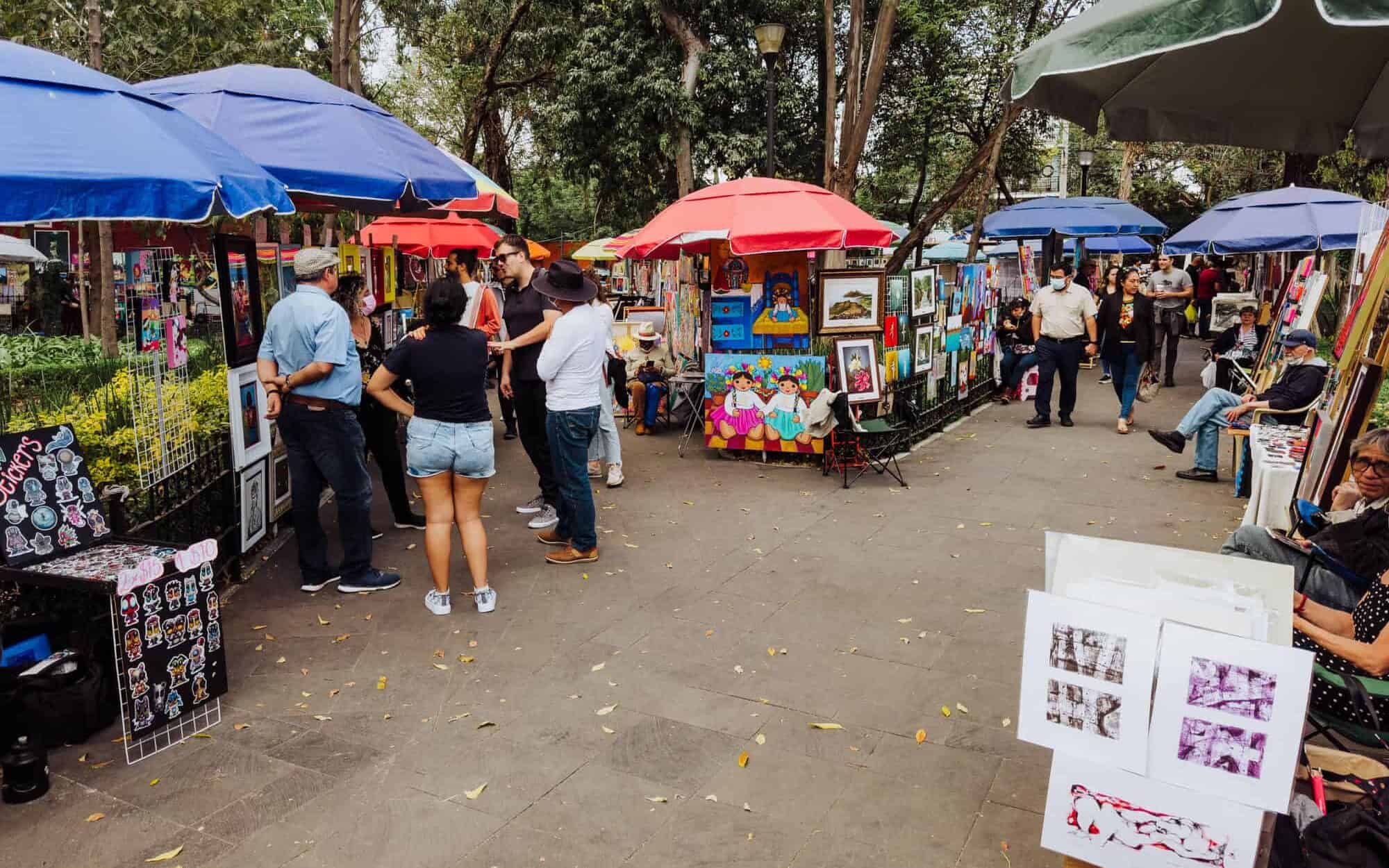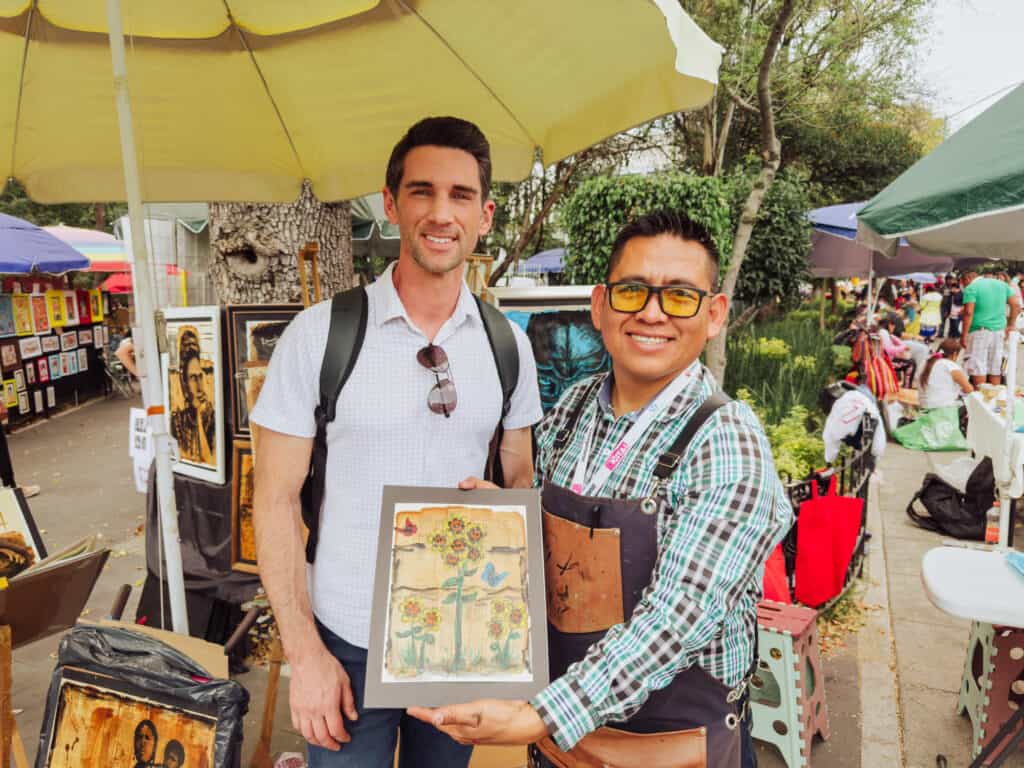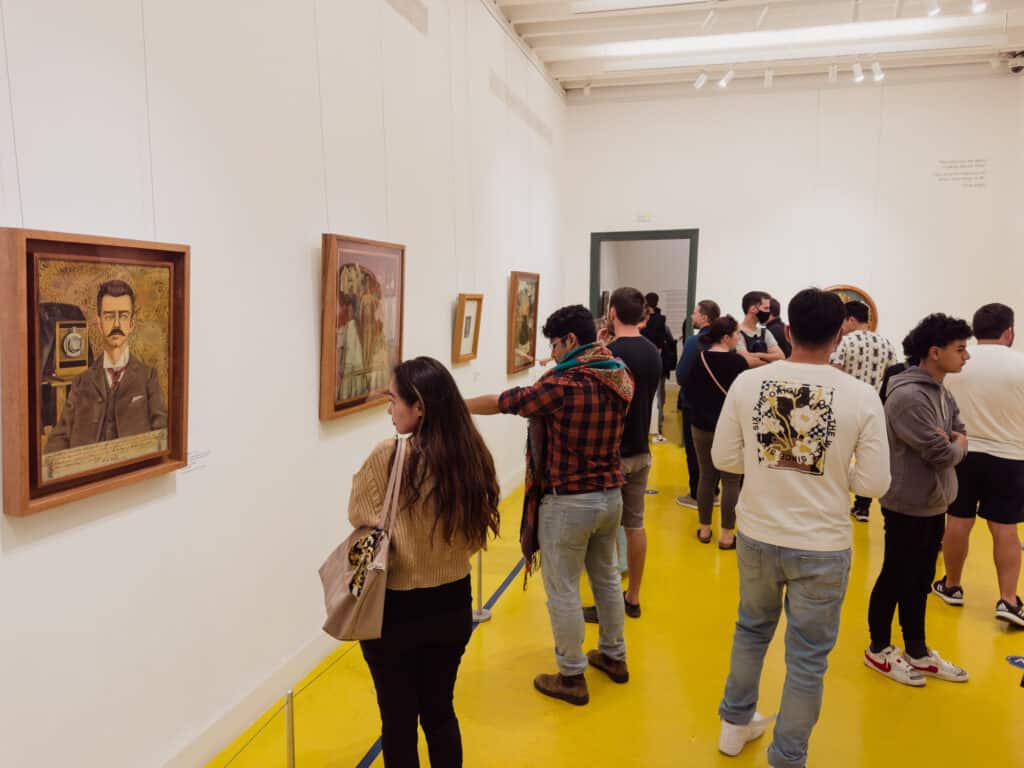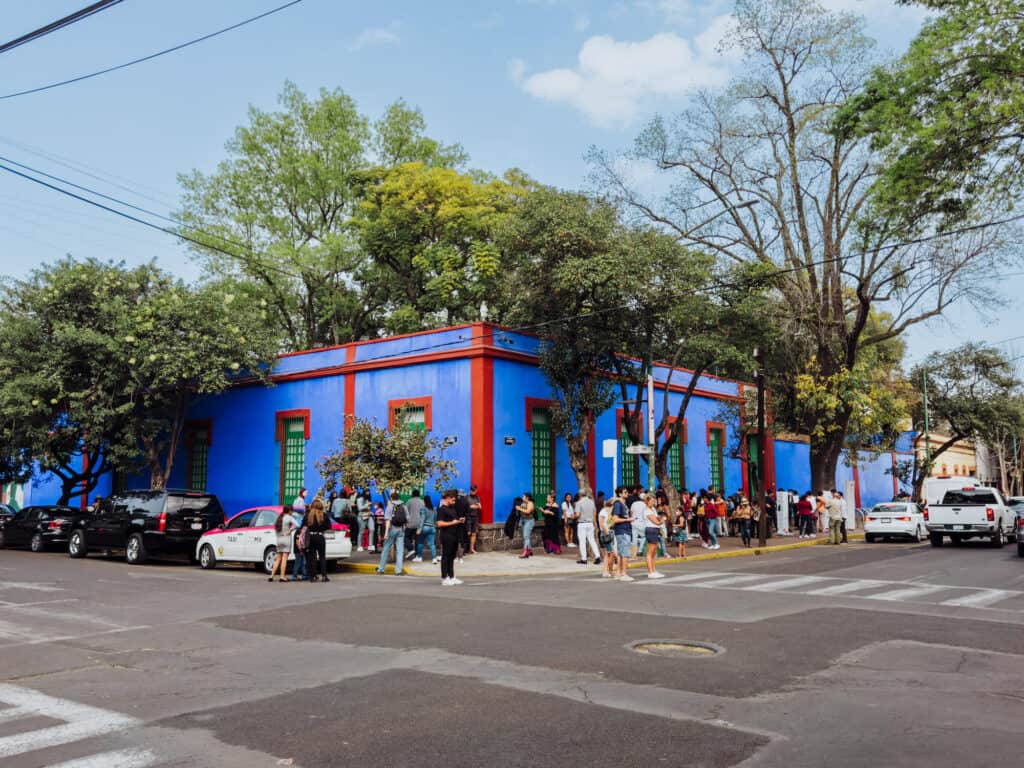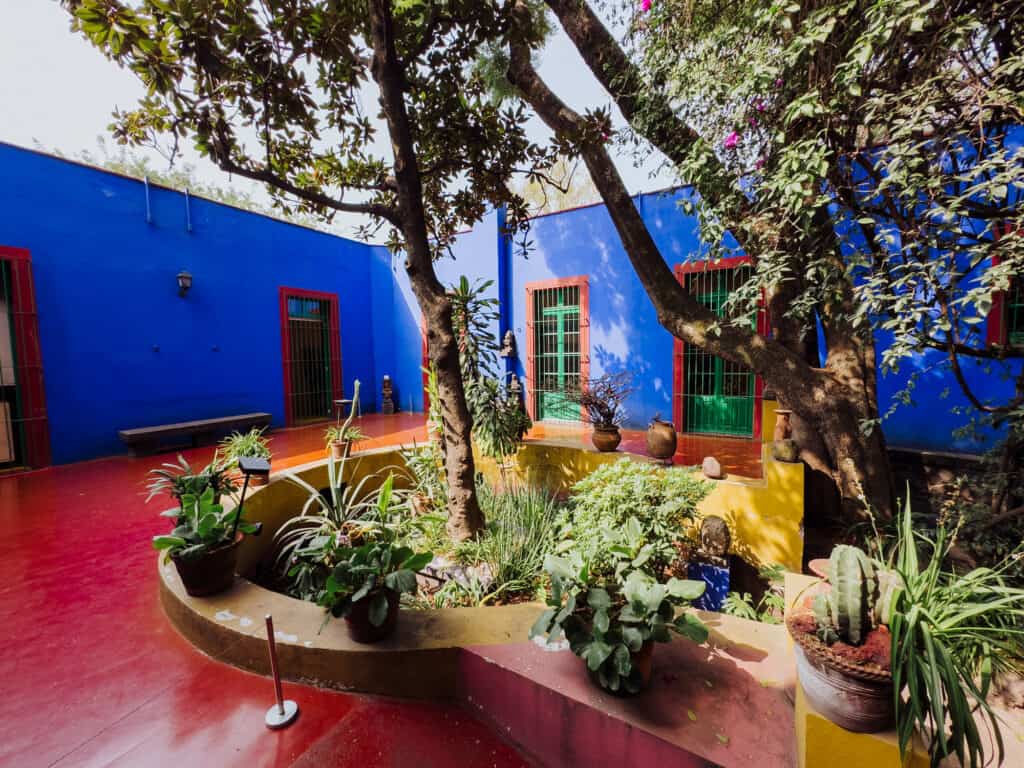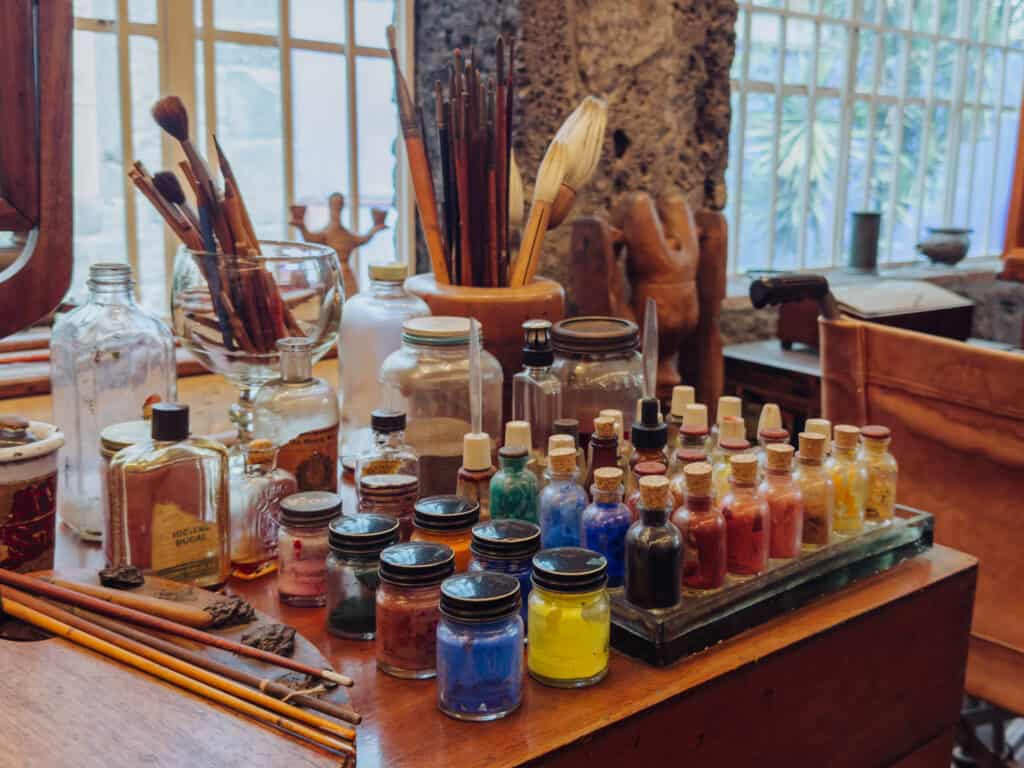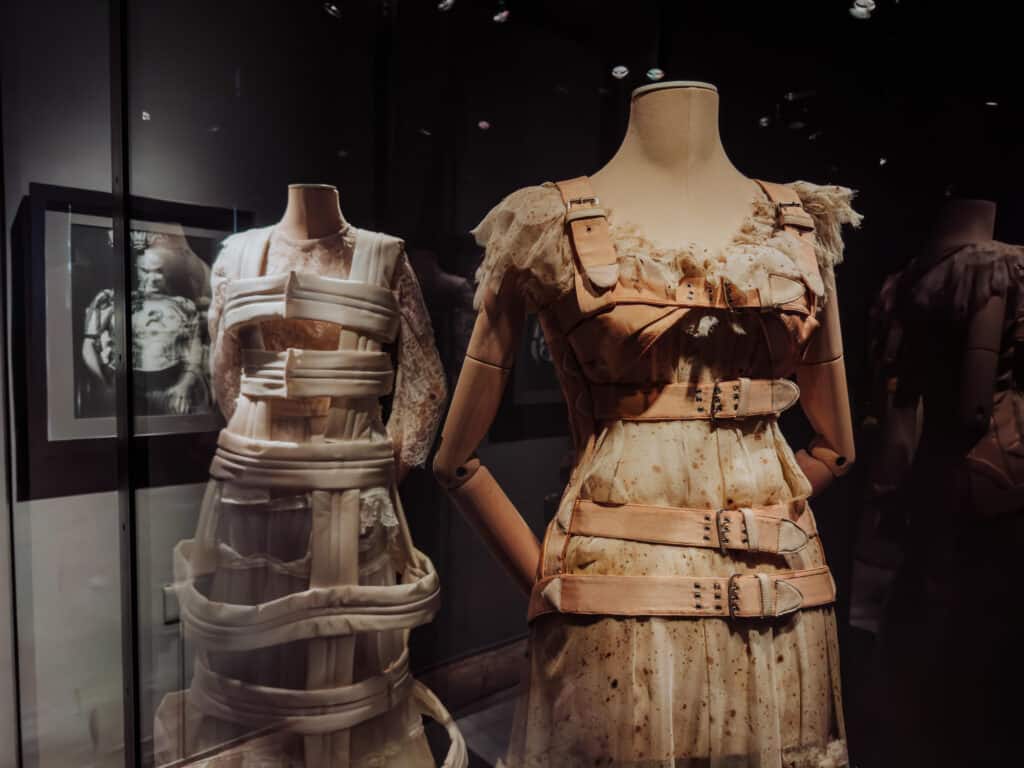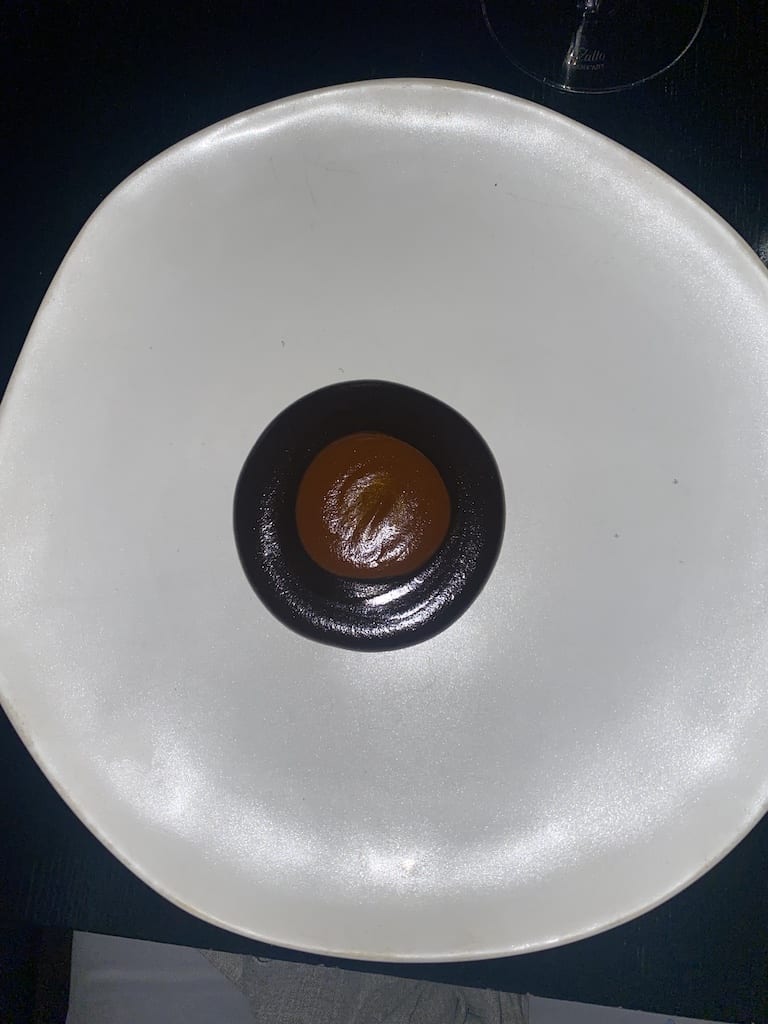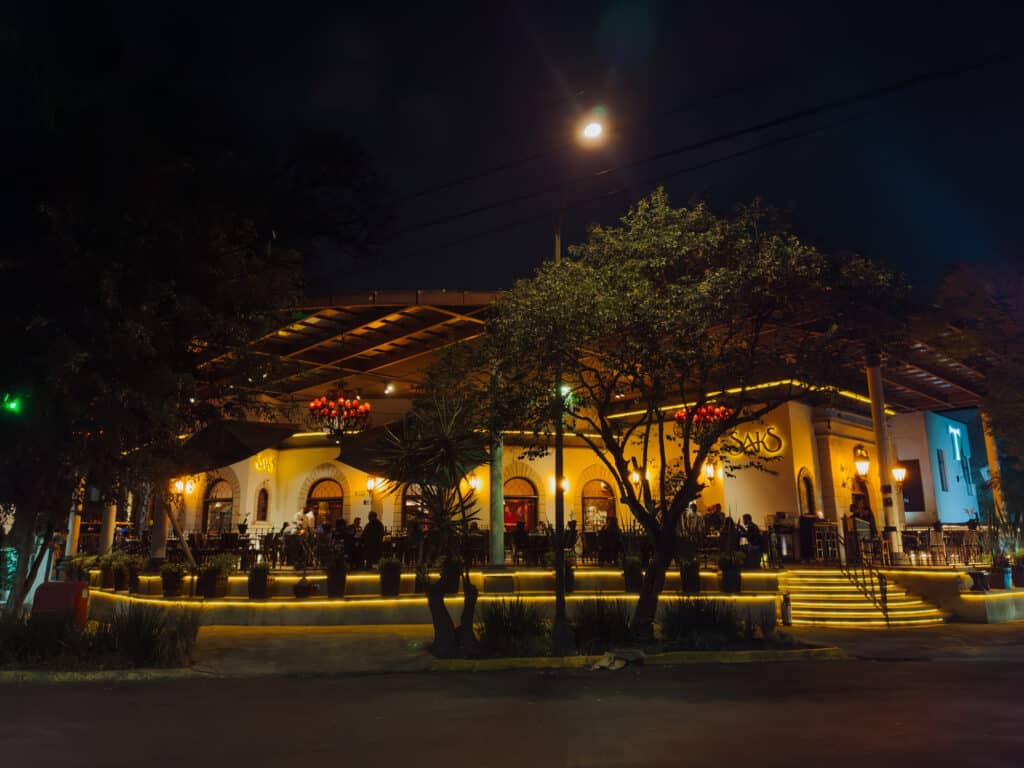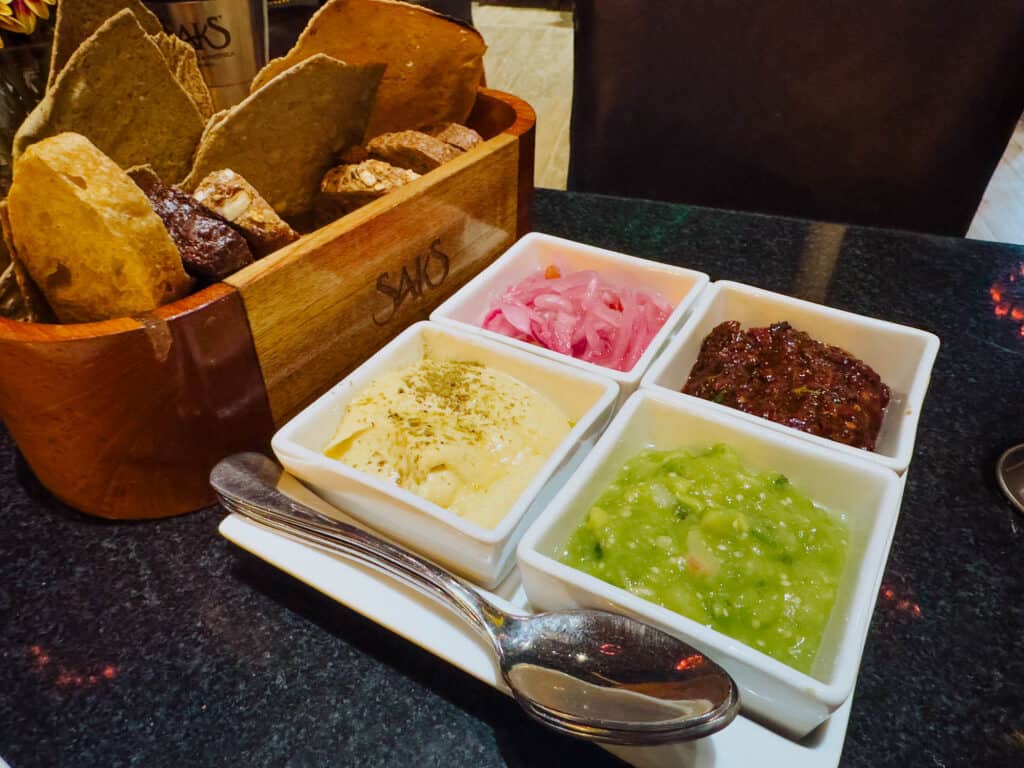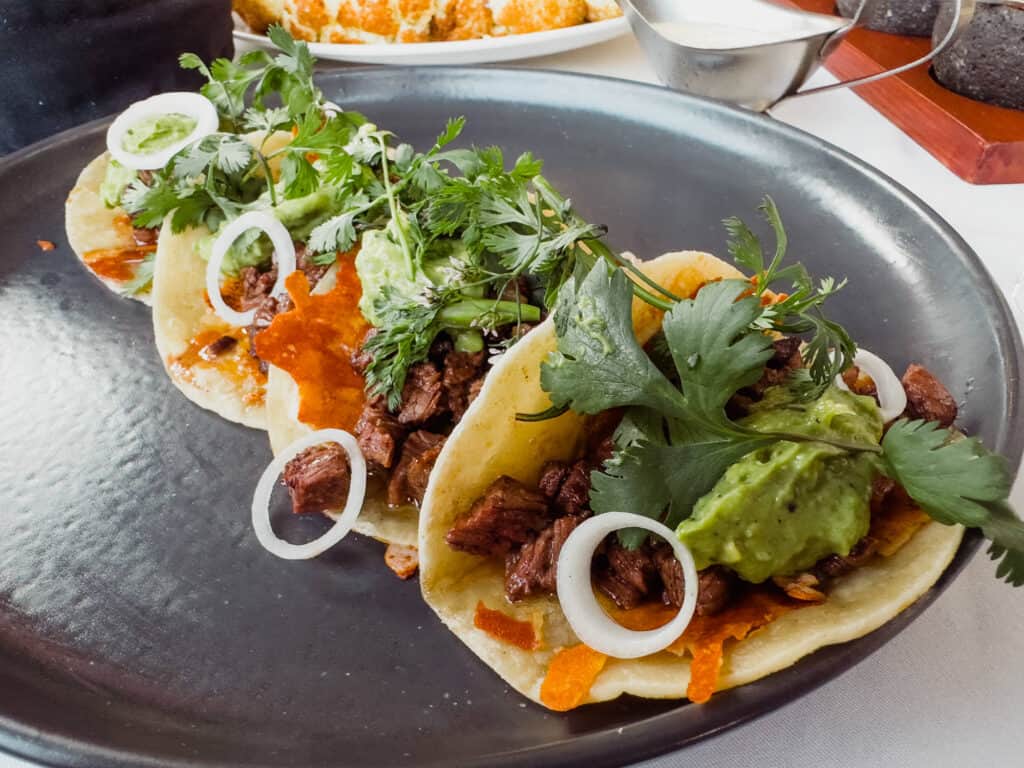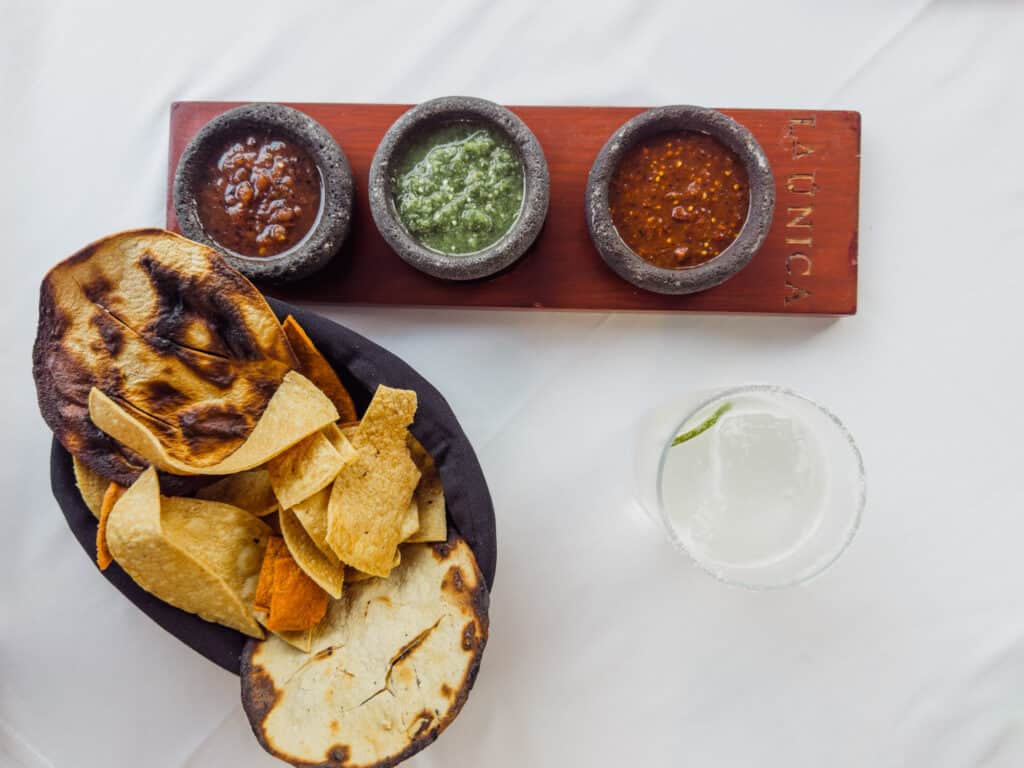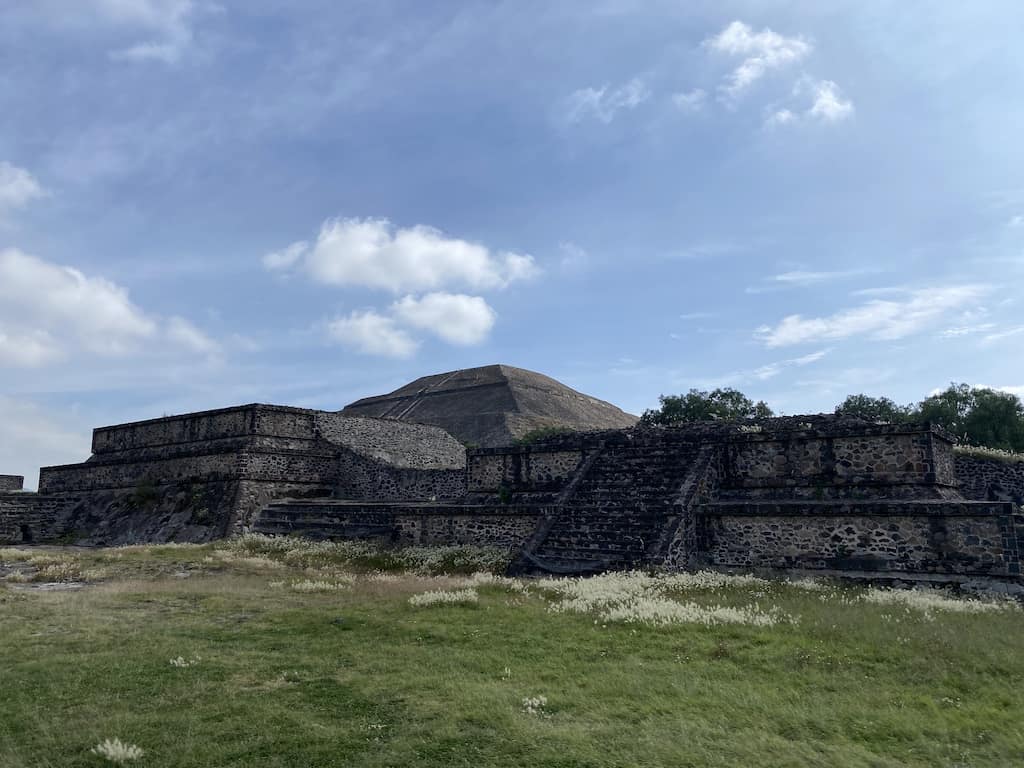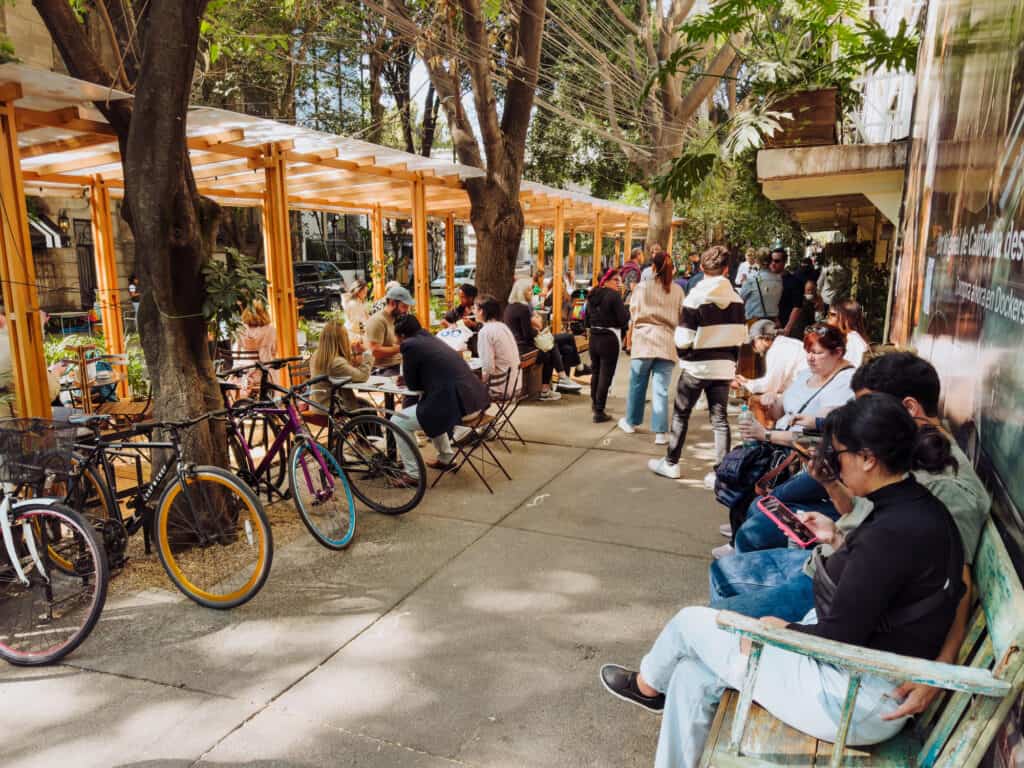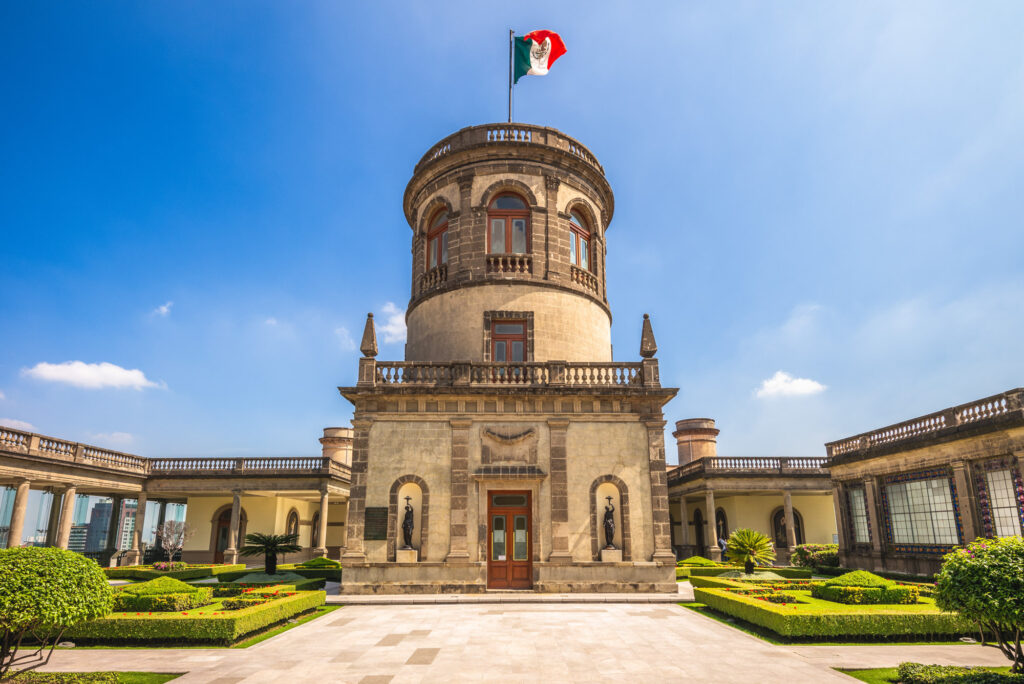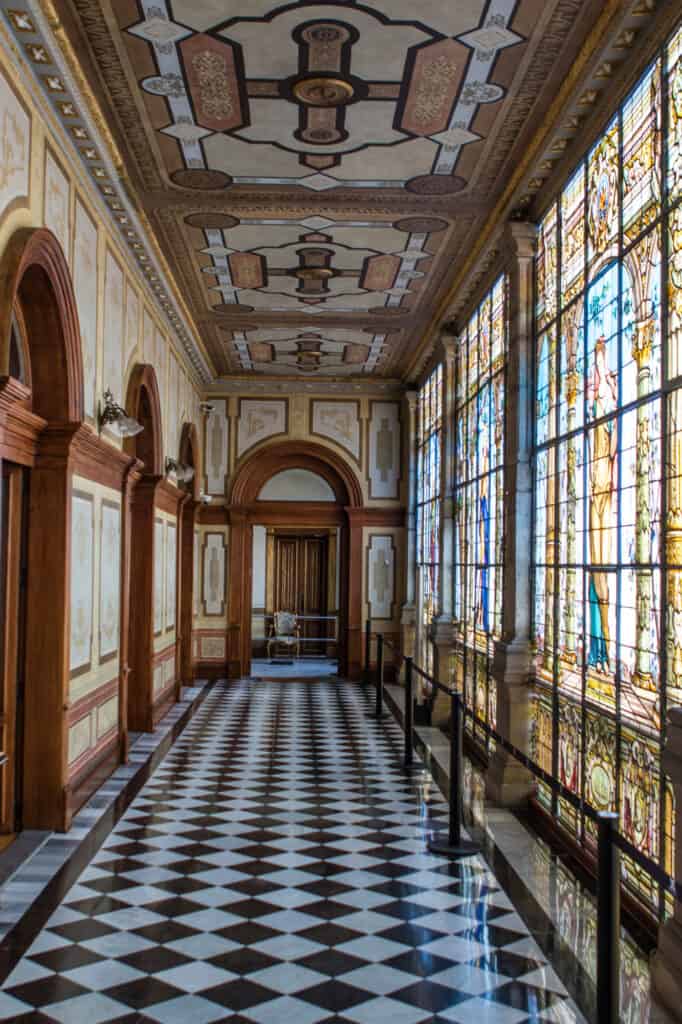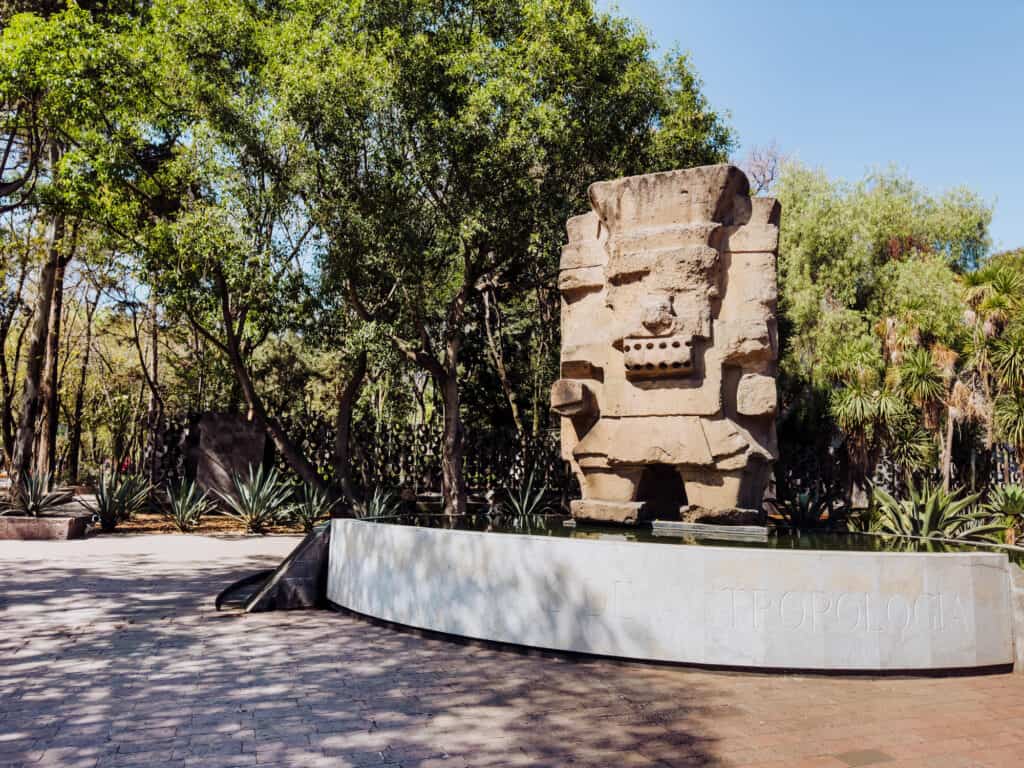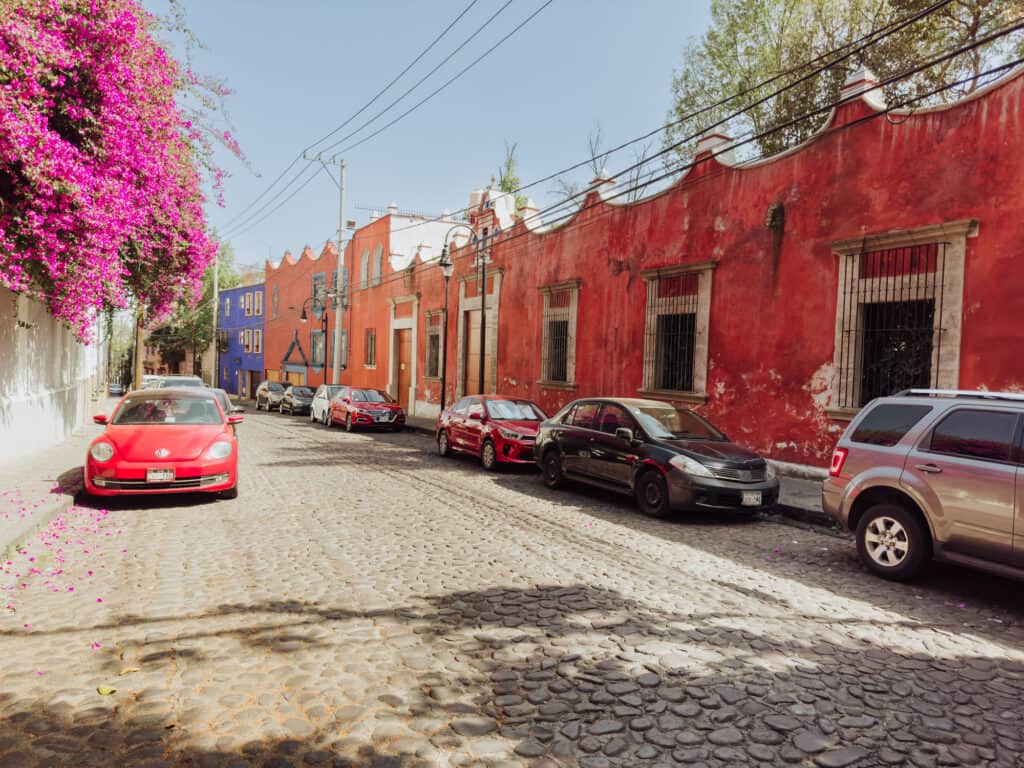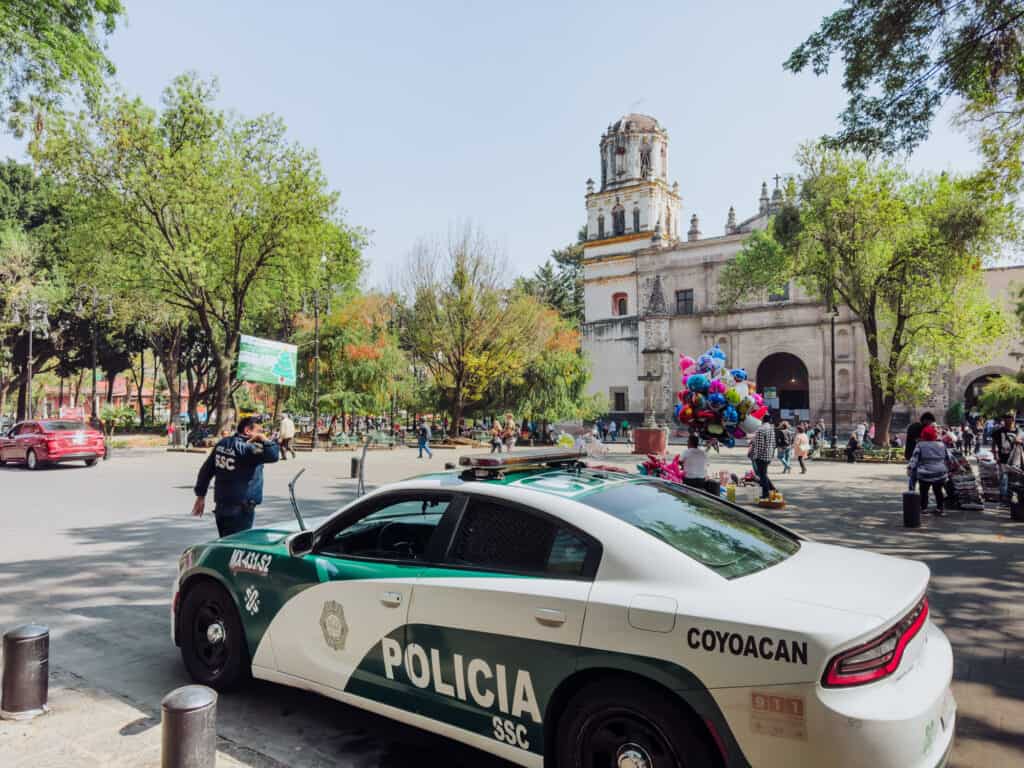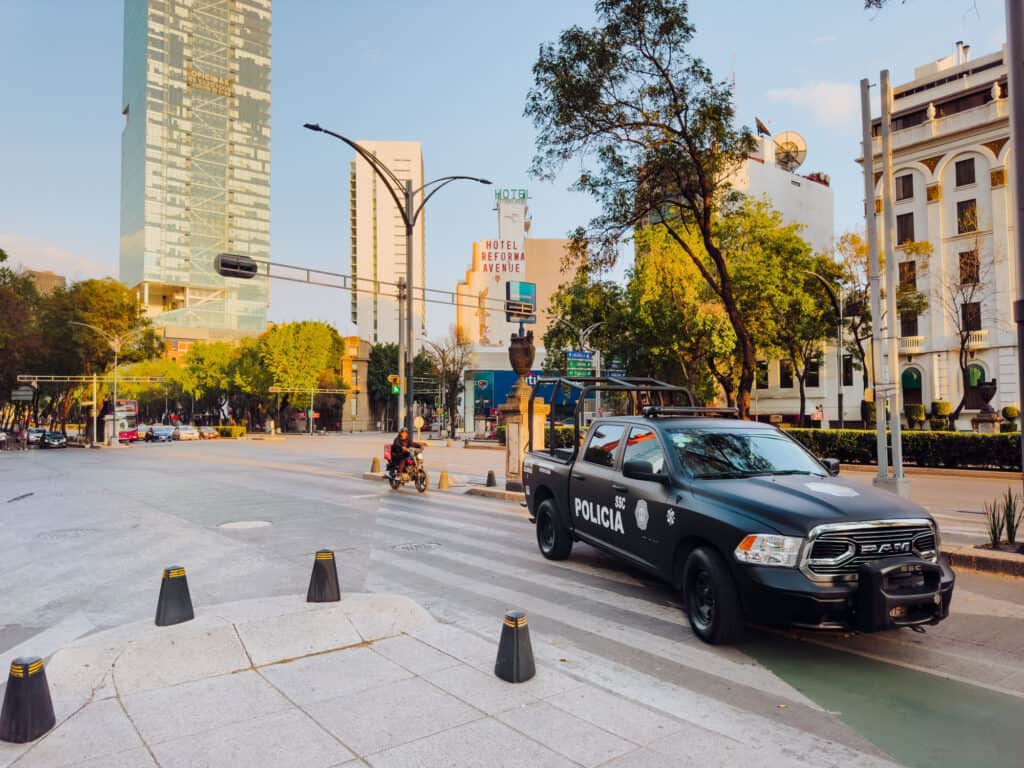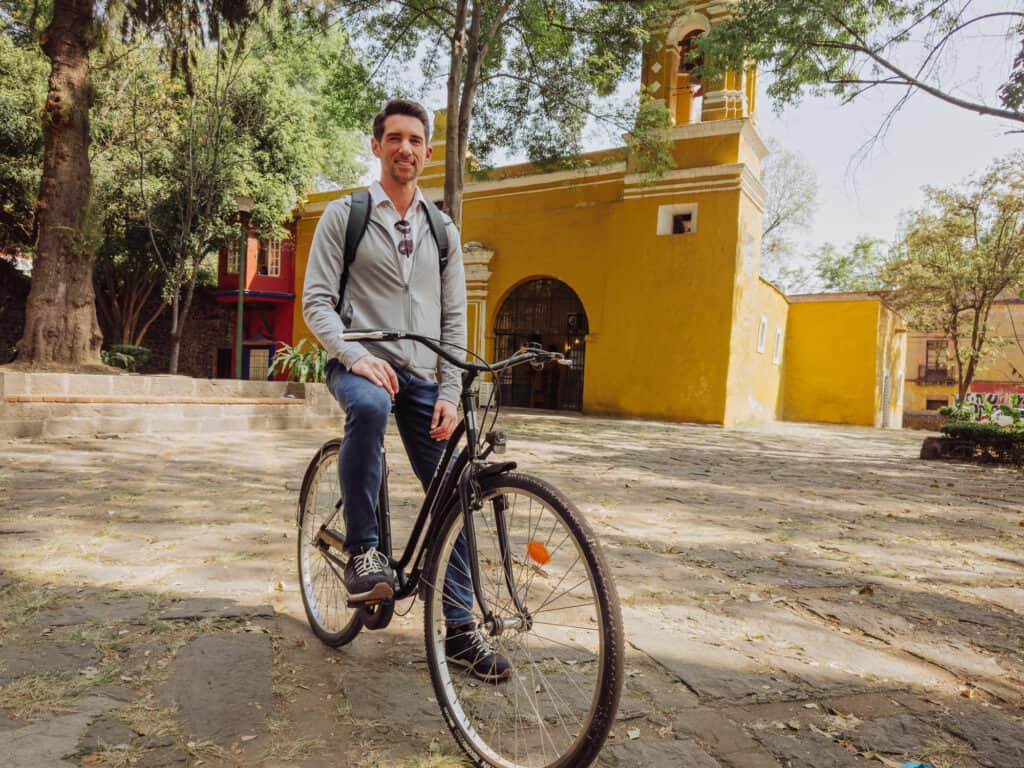Mexico City in 4 Days: An Itinerary & Guide
4 DAYS IN MEXICO CITY: A TRAVEL GUIDE
A visit to Mexico City in 4 days should be focused on specific neighborhoods and destinations. The city itself is overwhelmingly large, and intimidating!
Whether you’re going to Mexico City on a work trip, or just a long weekend, using parts of this 4-day itinerary should help with your itinerary!
It includes the historic neighborhoods of Coyoacán, Polanco, Roma Norte, and San Ángel, along with Zócalo, which is the area around Mexico City’s central square. We’ll also make time for a day trip outside Mexico City, to the pyramids and ruins at Teotihuacan.
Key Takeaways for 4 Days in Mexico City
- It helps to break down a 4-day trip to Mexico City by targeting neighborhoods.
- Despite Mexico’s reputation of lawlessness in parts and corrupt police, the areas of Mexico City tourists are most interested in are all generally very safe.
- While Mexico City has public transportation ( both subway and bus systems) the most efficient way of getting around is by Uber or taxi.
- Keep in mind: many museums are *closed on Mondays* so adjust your itinerary if a Monday is one of your 4 days in Mexico City!
Where to Stay in Mexico City
I’d stay either in the Polanco neighborhood of Mexico City in a rented condo (see below) or in one of the traditional hotels near the city center.
You can use this interactive map to check out different hotel and rental options in Polanco, or zoom out to see other neighborhoods:
Mexico City in 4 Days: Day 1
One day of our 4-day trip to Mexico City will focus on the large area surrounding the main square in Mexico City, known as Zócalo (pronounced: so’-ka-lo). It’s also known as Plaza de la Constitución or Centro Histórico.
Before the region was colonized, it had long been the center of life for the Aztecs. This was the Aztec capital of Tenochtitlan. Aztec lore considered an adjacent site to be the “center of the universe” 700 years ago.
Today, Zócalo is surrounded by iconic sites, including the Metropolitan Cathedral and the National Palace (Catedral Metropolitana and Palacio Nacional).
In the plaza’s center, you’ll find the famous (and enormous) Mexican Flag, which is raised and lowered daily, in a ceremony which begins and ends in the National Palace.
➡️ Hire a Guide for a Mexico City Walking Tour
What to do in Zócalo
If you get to the area early enough, you can catch the daily 8:00am flag ceremony (which repeats at sunset). The flag, known as La Bandera, is hoisted by soldiers, accompanied by drummers and trumpets.
The Palacio Nacional was built in the 1500s by Spanish conquerors, and stands today as an iconic image of Mexico City. Stones from the ancient Aztec palace were used in the construction of the Palacio Nacional.
Inside, you can check out the huge murals painted by the Mexican artist Diego Rivera (Frida Kahlo’s husband) in the 1920s and 1930s. His murals in Zócalo depict Mexican history dating back to the arrival of the Aztec God, Quetzalcoatl.
The Metropolitan Cathedral is free to enter and explore on your own. Photos inside are generally not allowed.
Construction took centuries, beginning in the late 1500s, and ending in the early 1800s. The Spanish who conquered the area took inspiration from the Gothic cathedrals in Spain.
The Metropolitan Cathedral’s modern life has been tumultuous! A fire destroyed much of the cathedral’s interior in 1967, but also led to the discovery of ancient hidden documents and artwork.
The World Monuments Fund added the cathedral to its list of the “Most Endangered Sites,” after it began sinking into the clay soil beneath the site. After a decade of stabilization work, the cathedral was removed from the list in 2000. Still, restoration work continues, so parts of the cathedral may be off-limits on your visit.
➡️ Hire a Guide for a Mexico City Walking Tour
Templo Mayor (Aztec ruins)
The ruins of the Aztecs, known as Templo Mayor (Main Temple) date back to the 1300s. Today, they’re surrounded by the palace and other city buildings at the heart of Centro Histórico.
Food in Zócalo
You’ll have an amazing array of street food options around the square, with vendors selling burritos for less than $2 USD.
A favorite spot can be found just behind the cathedral (on the north side). You’ll find a few multi-story restaurants with patio seating out front and terrace seating above.
Geting to Zócalo:
- Metro Station: Zócalo/Tenochtitlan on the northeast corner of the square
- Uber/Taxi dropoff: anywhere near Centro Histórico
Mexico City in 4 Days: Day 2
On our second of 4 days in Mexico City, we’re going to focus on two of its most famous neighborhoods: Polanco and Coyoacán.
Breakfast in Polanco
Polanco is an upscale part of Mexico City, and you’ll notice: prices are quite a bit higher at the restaurants. Still, it’s home to some of the best food in Mexico (and some of the most revered restaurants).
I admit, off the bat: I’m not a “foodie.” I love to eat, and enjoy all kinds of food, but the kitchen chemistry stuff gets lost on me. I also chose some of Mexico City’s amazing street food over the more high-class establishments!
➡️ Book a Tour: Polanco Food Tour
Anyway, we’re starting our day in Polanco at a great breakfast spot that will please all kinds of eaters: Ojo de Agua. The exterior lured us in, with its market-like decor, fresh veggies on display, and tables under the trees along the sidewalk.
Polanco to Coyoacán
From Polanco, we’ll take an Uber (or taxi) to the historic neighborhood of Coyoacán, which is home to one of Mexico City’s most famous landmarks: Frida Kahlo’s home (and present day museum). It should be less than a $10 US Uber ride between the two neighborhoods.
Coyoacán Bike Tour
While we normally explore on our own, we chose a tour option for Coyoacán, to make sure we hit all of the important sites and learned as much as possible about the history.
➡️ Click: Bike Tour of Coyoacán + Kahlo Museum
The Capilla de la Conchita, known as Conchita, is another church in a beautiful square in Coyoacán. Dating back to the 1500s, the Conchita has been through several reconstructions. During one of them, crews found: it was built on an Aztec burial site. Most recently, Conchita closed for a while for repairs after an earthquake in 2017. You can see red pigment in its stone facade from hundreds of years ago, along with the sealed cracks from earthquake damage over that time. If you visit Coyoacán on Sunday, you’ll get to see inside the church.
Food in Coyoacán
Coyoacán is home to one of Mexico City’s most famous churro spots: Las Lupitas. We parked our bikes outside for a snack, before riding on.
Along Ignacio Allende, you’ll come across the Mercado, which is an immense, jam-packed market full of food and Mexican party supplies for different events. We made our way toward a tostada table in the middle. A full lunch of tostadas piled high with different meats and vegetables will cost $4.
Mexico City’s Art Market
Depending on your stay in Mexico City, try to time your day in Coyoacán to a Saturday or Sunday. The Jardin Allende (a park across from the mercado) hosts an art fair, featuring dozens of local artists. You can browse their selections, and talk to the artists about their mediums and inspirations.
Tips for Visiting the Frida Kahlo Museum
The Kahlo house is one of the most-visited attractions in Coyoacán, and really: in all of Mexico City. The line often stretches out the door and down the block. You’ll find: timed entries help move the crowd along.
➡️ Book Advanced Ticket: Frida Kahlo Museum
Our bike tour made the Frida Kahlo Museum the final stop. A pre-paid ticket (part of the bike tour package) got us into the “blue house” with the 1:30pm group.
You’ll have full access to the home where Frida Kahlo and Diego Rivera lived during parts of their tumultuous marriage. The bright blue exterior hides an expansive garden area inside, along with several buildings which make up the estate.
Polanco for Dinner
Pujol might be the most famous restaurant in Mexico City. Whether it matters to you as a diner or not, Pujol is consistently ranked as one of the “Top 50 Restaurants in the World” by Restaurant Magazine.
Pujol’s signature dish is an aged mole. It’s called “Mole Madre, Mole Nuevo” on the menu. You’ll get a circle of the “mother mole,” which is aged more than 1,000 days, with a circle of a new mole sauce. A side of warm tortillas comes for dipping. The other dishes are quite stunning.
If you’re interested in something more upscale, yet mainstream, I’d suggest Saks. You’ll find a few Saks locations in Mexico City. Each has a very nice outdoor dining area, and an excellent menu.
I’d also recommend La Unica in Polanco. I’ll post photos of the salsa sampler and tacos, since the images are appetizing.
Mexico City in 4 Days: Day 3
I mentioned how immense Mexico City is, and how intense the traffic can be. If you have 4 days in Mexico City, consider spending one of them outside the city limits.
Mexico City to Teotihuacan
The ruins of Teotihuacan are only 25 miles northeast of Mexico City, and are 2,000 years old. As a UNESCO World Heritage Site, the remains of the ancient civilization (once the largest ‘city’ in the Americas) are preserved yet widely open to visitors today.
➡️ Private Tour: Mexico City to Teotihuacan
You can see the Pyramid of the Moon and the Pyramid of the Sun, as excavation and research work continues there today.
Mexico City in 4 Days: Day 4
Our fourth day will be split between Roma Norte, which has grown in fame in recent years, and also the museums and parks around Chapultapec Castle.
Roma Norte
The Roma Norte neighborhood gained international fame with the release of Alfonso Cuarón’s Oscar-winning film, “Roma” in 2018. It’s known as a trendy, artsy, bohemian area with a lively nightlife.
In our case, I’m starting the day there, at the famous Panaderia Rosetta. Expect to find a line outside. Our 30 minute wait was worth it. (Maybe run across the street to the boutiques while you wait?).
Rosetta’s interesting mix of sweet and savory bread and breakfast items will have the non-Spanish-speaker (me) confused and trying to translate the menu. We tried several. I might avoid the blueberry focaccia next time, but the quiche and many other breads were winners!
Chapultapec Castle & Parks
From Roma Norte, make your way over to Chapultapec. The park surrounding the castle has been home to Aztec ceremonies, military academies, and royal palaces over the centuries. Again, don’t plan to see the castle or museums here on Mondays, because they’re closed.
➡️ Book Advanced Tickets: Chapultapec Castle
Today, after you’re done at the castle itself, check out the beautiful botanical gardens down the street. The Museum of Natural History is also part of the park complex, as is the Tamayo Museum (modern art).
Is Mexico City Safe?
Mexico City is quite safe, if we’re talking about Coyoacán, Polanco, and the other parts of the metropolis where tourists will frequent. You’ll feel safe walking around all day, and into the night.
Is Roma Norte Safe?
Just before Christmas in 2022, the trendy, safe reputation of Roma Norte was somewhat broken, after the murders of two artist brothers. Jorge and Andres Tirado, a musician and an actor, were found dead in their basement. Each had strong followings on social media, so the shock over their deaths spread quickly.
Mexican media reported the murders were the result of a dispute over the true owner of the building they were living in. Since these were tragic, yet *targeted* murders, they shouldn’t impact your sense of safety as a tourist.
I asked several people, and they seemed to agree: it’s all about a show of force. I didn’t see any of the officers pull drivers over or ticket jaywalkers. They were just there, driving up and down the main streets with their lights flashing, and standing at intersections.
Neighborhoods to Avoid in Mexico City
In general, as a tourist you should consider avoiding neighborhoods with higher crime rates. This is especially true at night. Currently these would include:
- Iztapalapa
- Ciudad Neza
- Tepito
- Doctores
- La Merced Market
The Best Way to Get Around Mexico City
Mexico City has a decent subway system, which will definitely get you to all of the neighborhoods you’d like to visit.
Still, even when gas prices spiked in 2022, Ubers and taxis remained very affordable
People in Mexico City also use an app called Didi to get around. It’s similar to Uber, so if you’re going for a few days, it might be worth downloading Didi so you can compare prices.
Lyft is currently working to expand into the Mexican market, as well.
2024 Uber Ride Price Examples:
- MEX (airport) to Polanco: $20 (took almost an hour)
- Reforma to Polanco: $5
- Coyoacán to Zócalo: $6
- Roma Norte to Chapultapec: $8
- Chapultapec to San Ángel: $18
- San Ángel to Polanco: $8
- Polanco to MEX (airport): $26 (SUV)
Tipping Drivers in Mexico City
You’ll notice when your Uber ride ends, the app will bring up an option to tip:
- MX$10
- MX$15
- MX$20
That translates to about 50 cents, 80 cents, and a dollar.
I was surprised the tip options were so low! Uber does provide a line for you to enter your own amount. Frankly, the drivers, whether in Ubers or Didis or taxis, deal with a lot on the streets and highways of Mexico City. I’d tip a minimum of MX$100, which is roughly $5US. They earn it!
Wrap: Is it Worth going to Mexico City for 4 Days?
Without a doubt, you’ll be able to cover a lot in Mexico City in 4 days!
The Greater Mexico City area is about 3,000 square miles in size, which is three times the size of Rhode Island, twice the size of New York’s Long Island, and 50% larger than Delaware. The population is 21,000,000+!
You’d need far more time to explore it all, but the information in this guide should have you pretty satisfied that you saw the best of Mexico City 🇲🇽 🇲🇽 🇲🇽
